
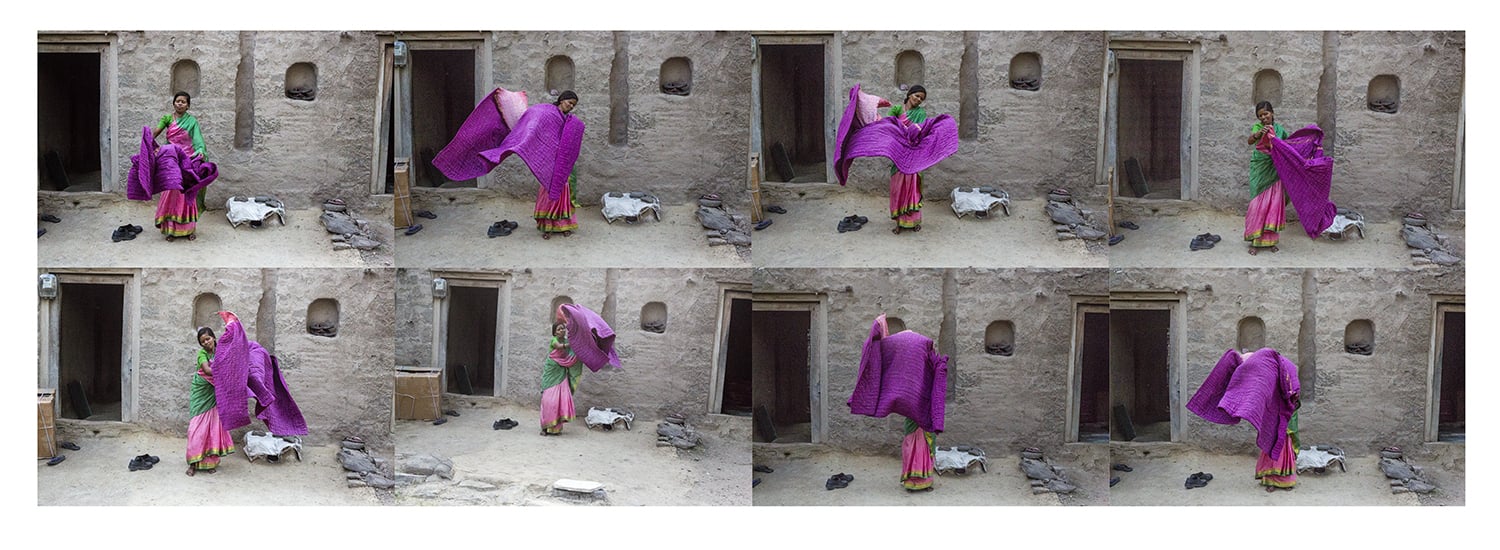
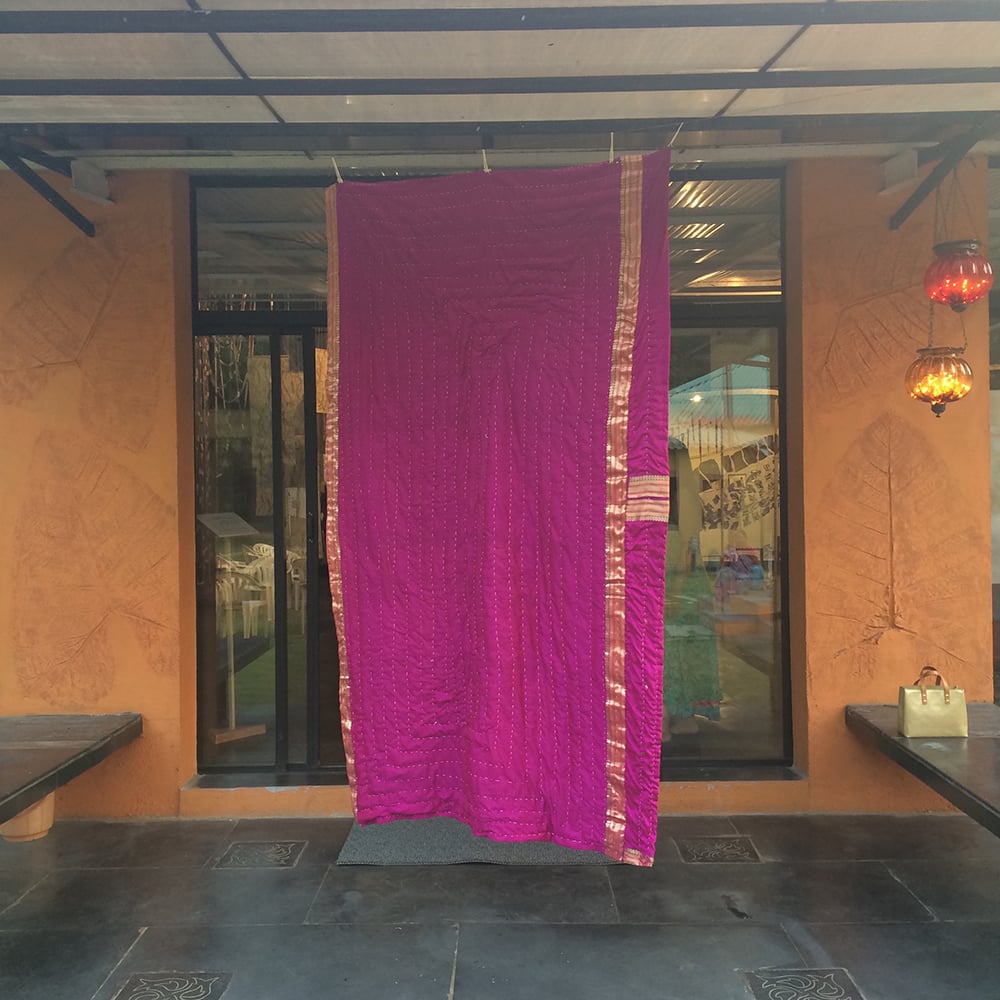
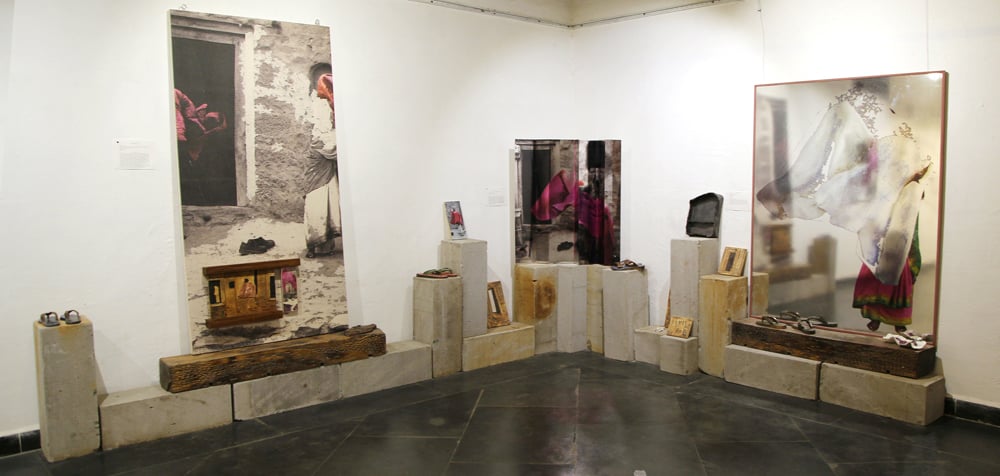
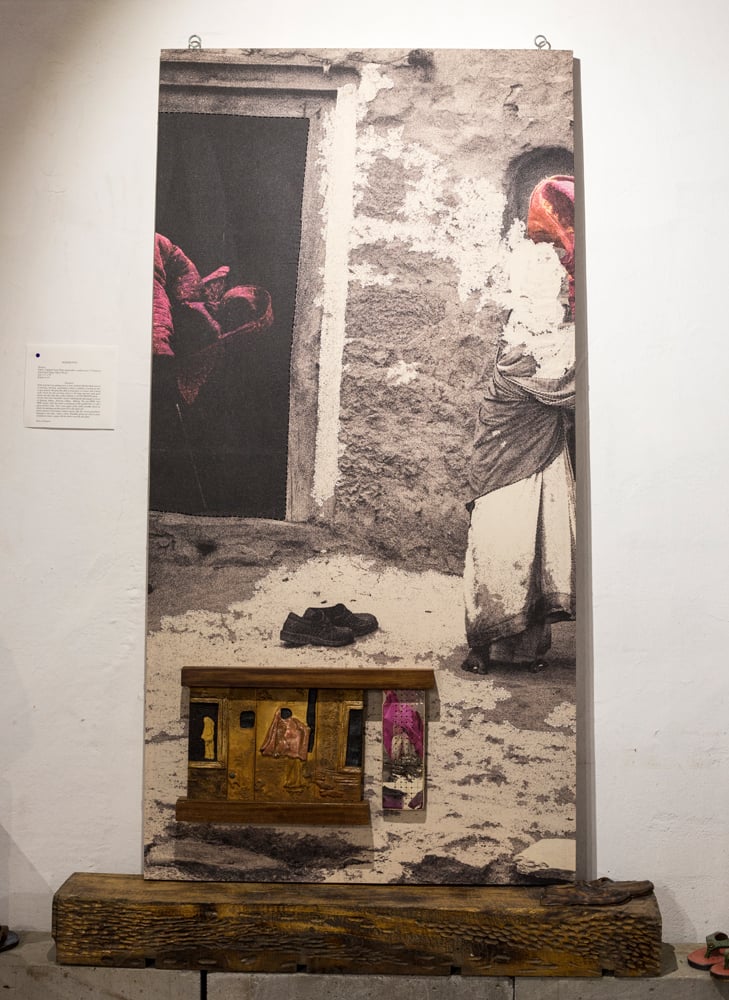
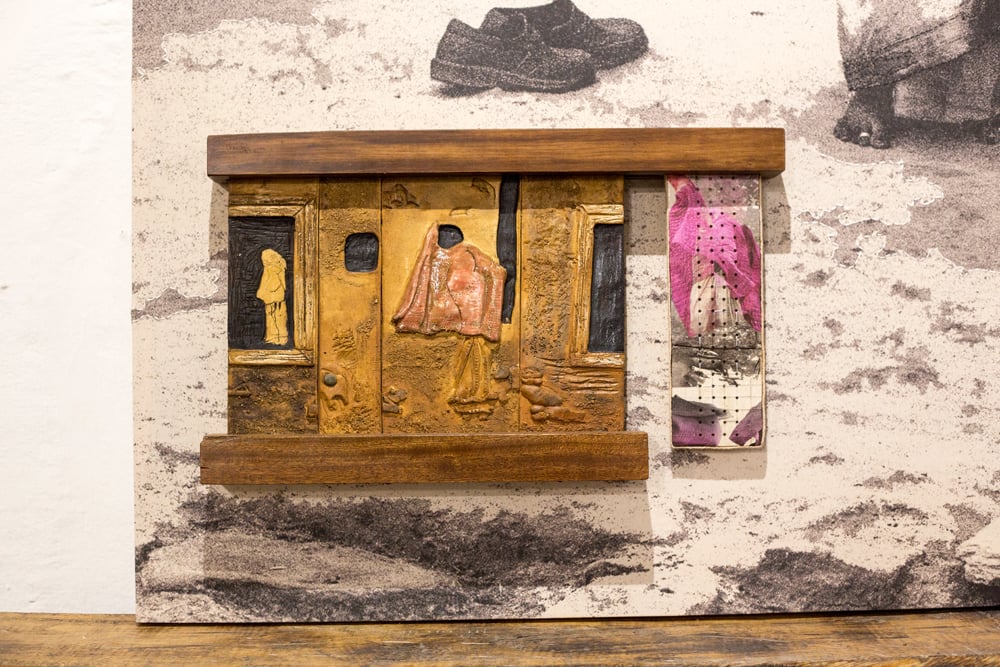
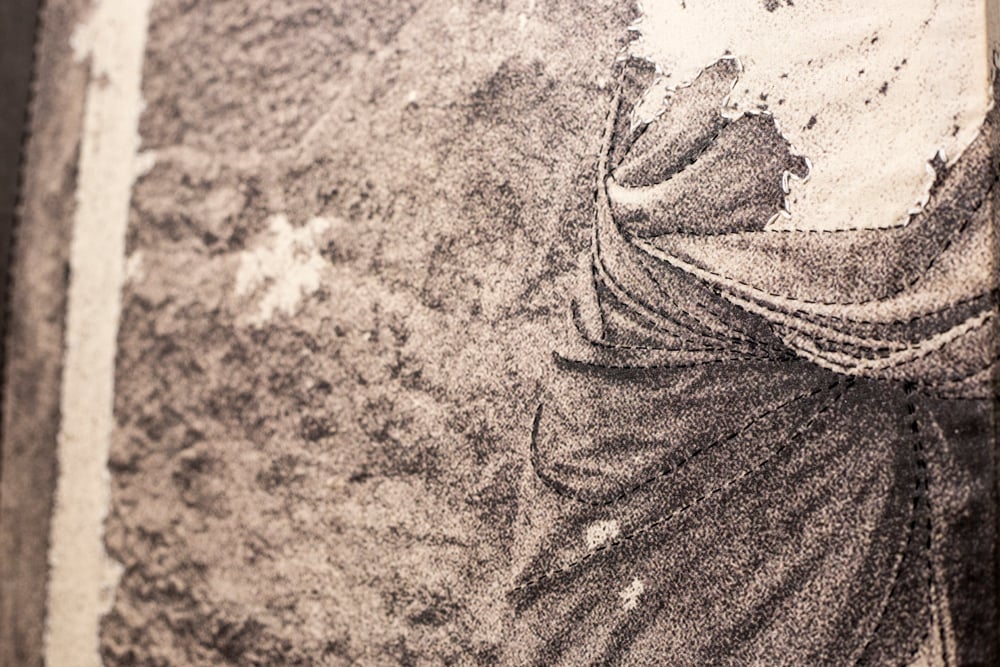
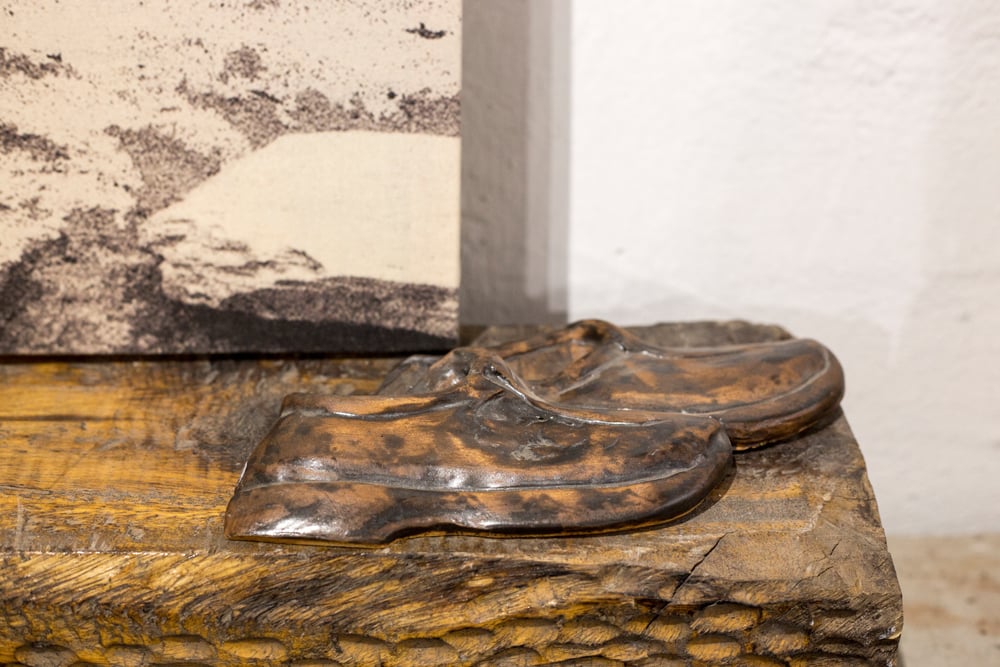
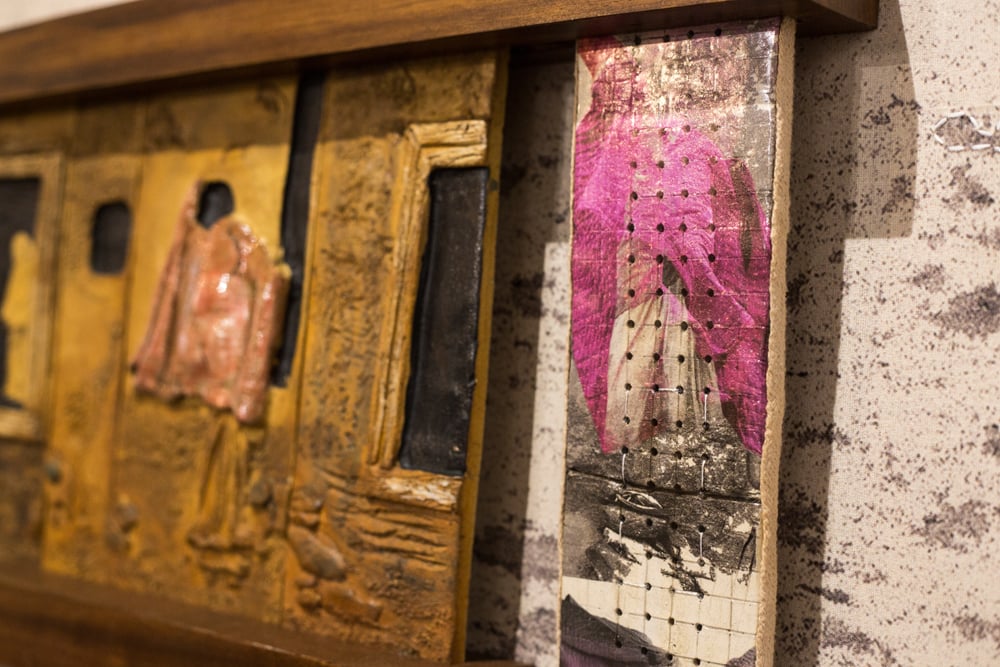
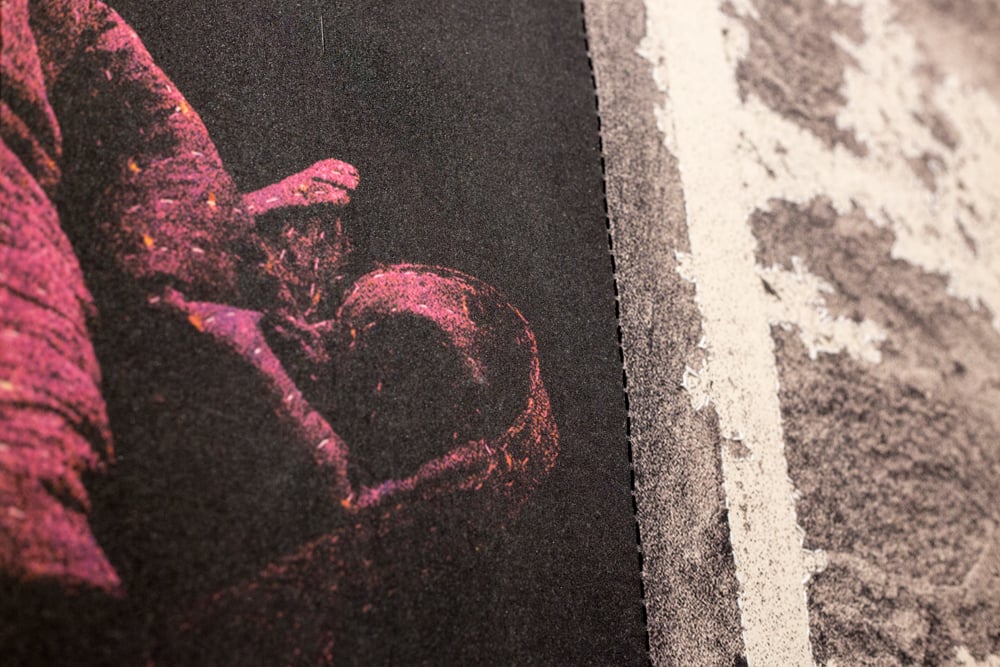
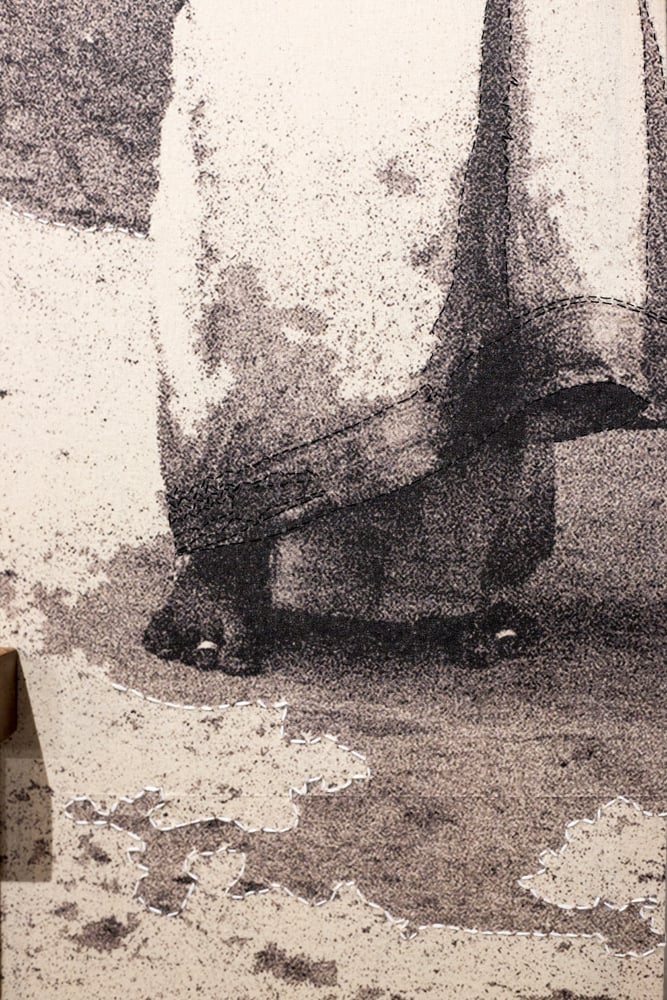
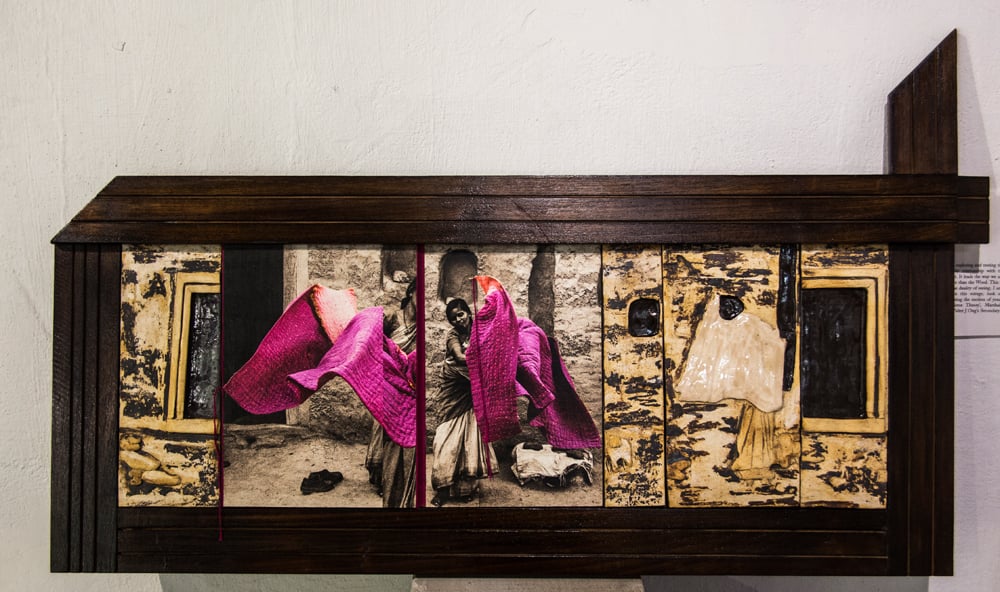
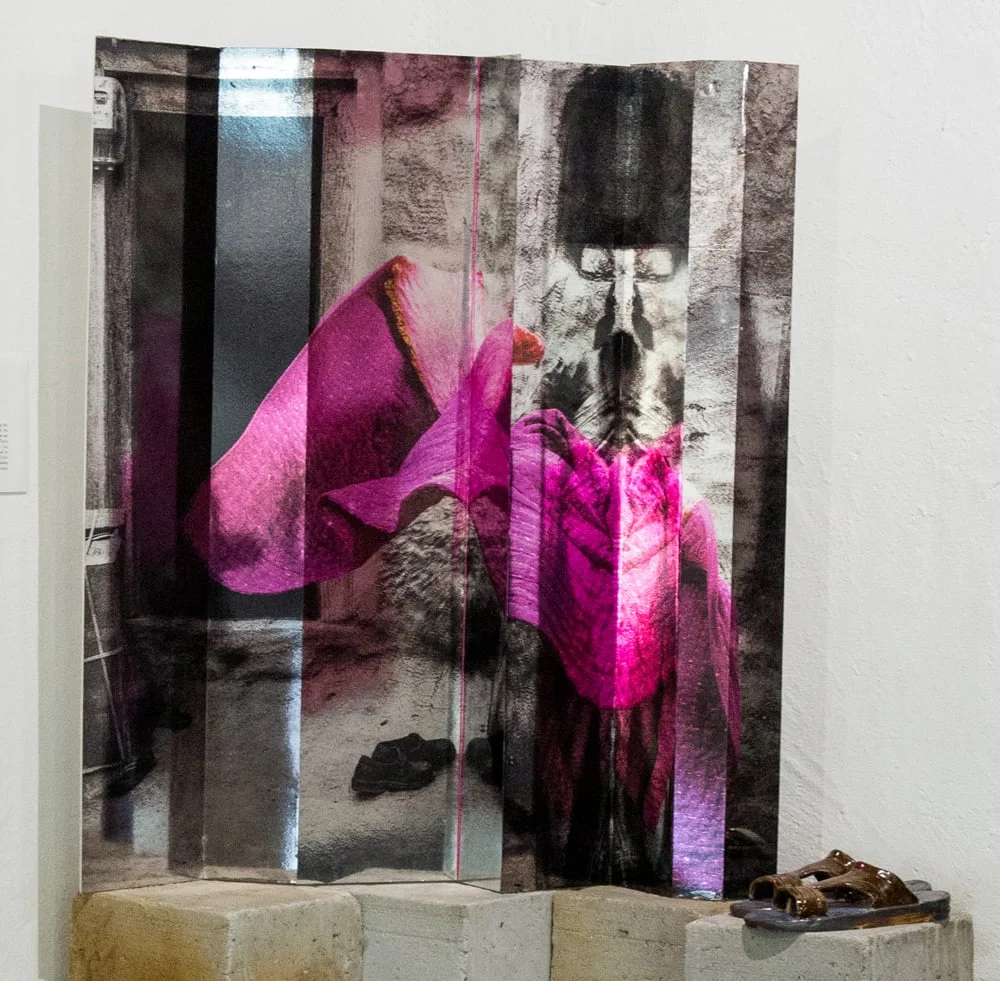
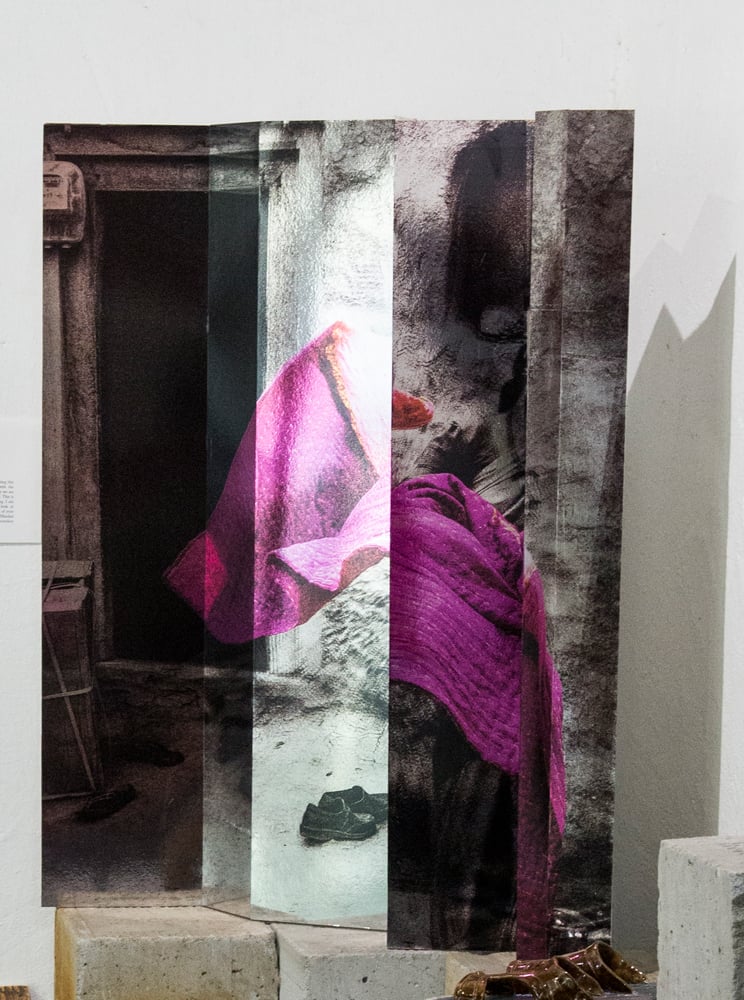
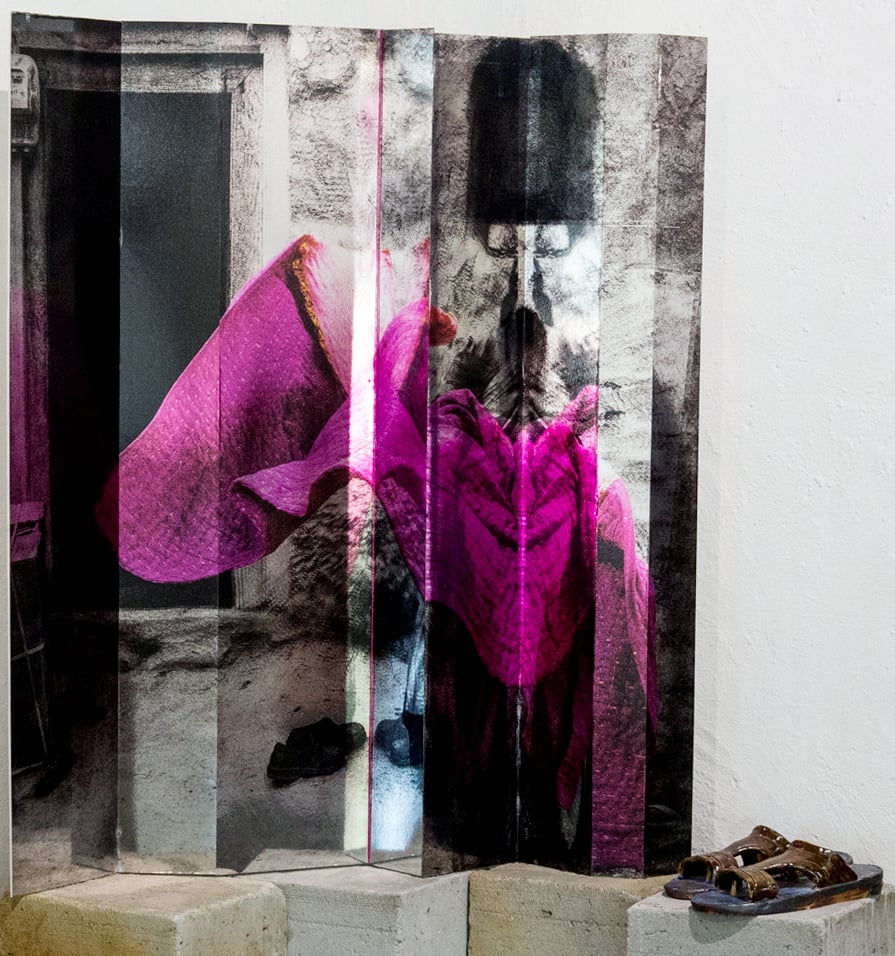
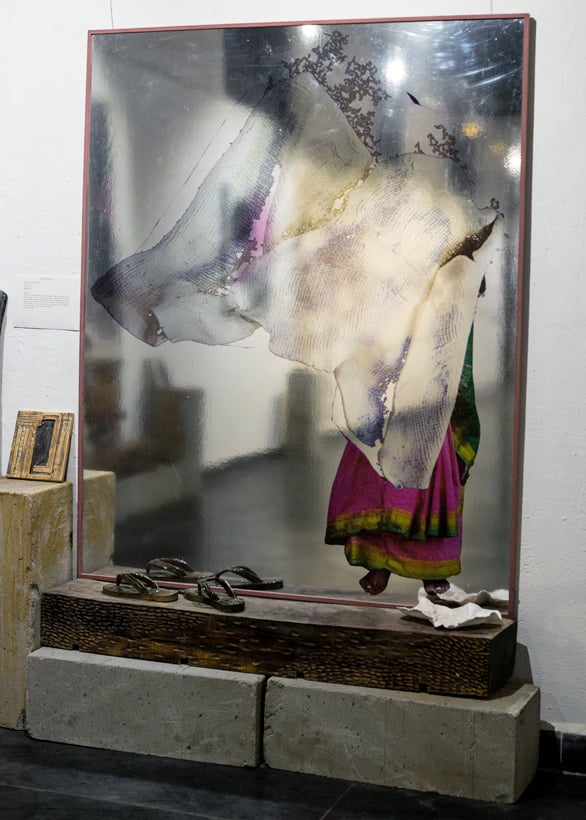
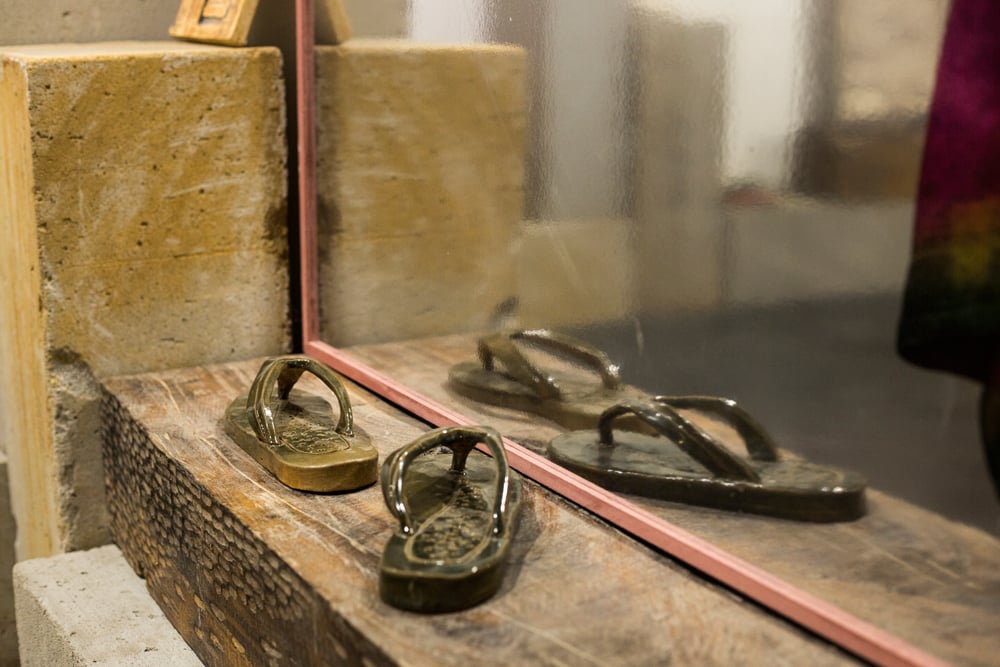
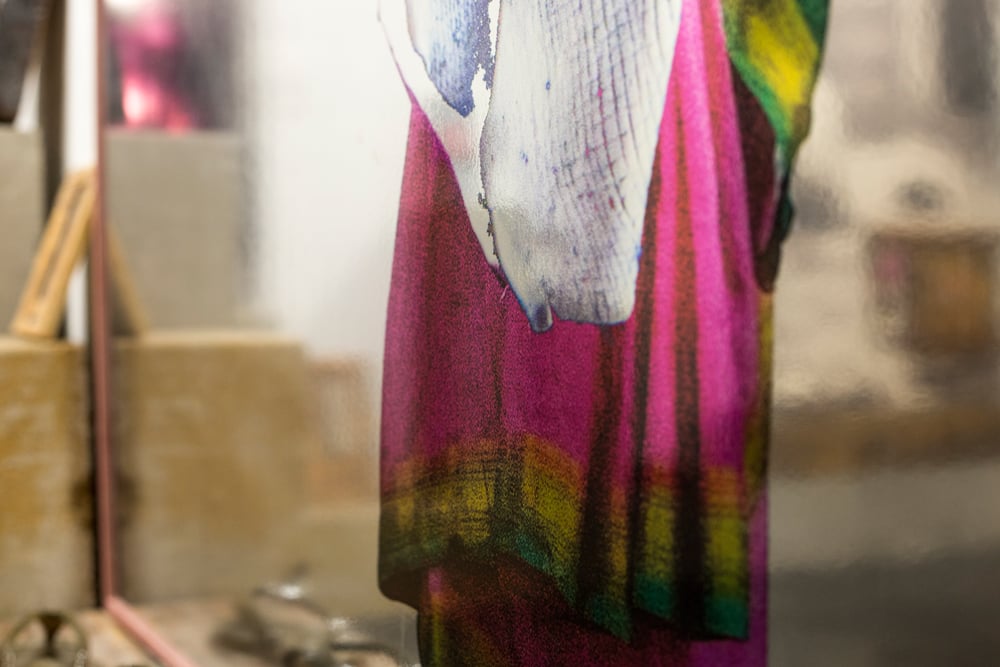
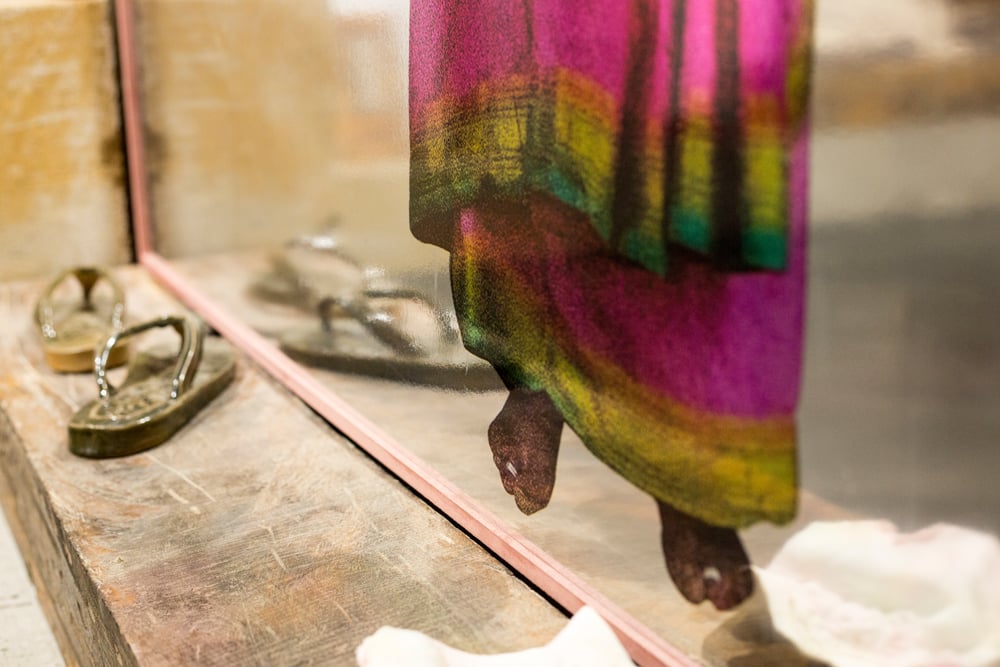
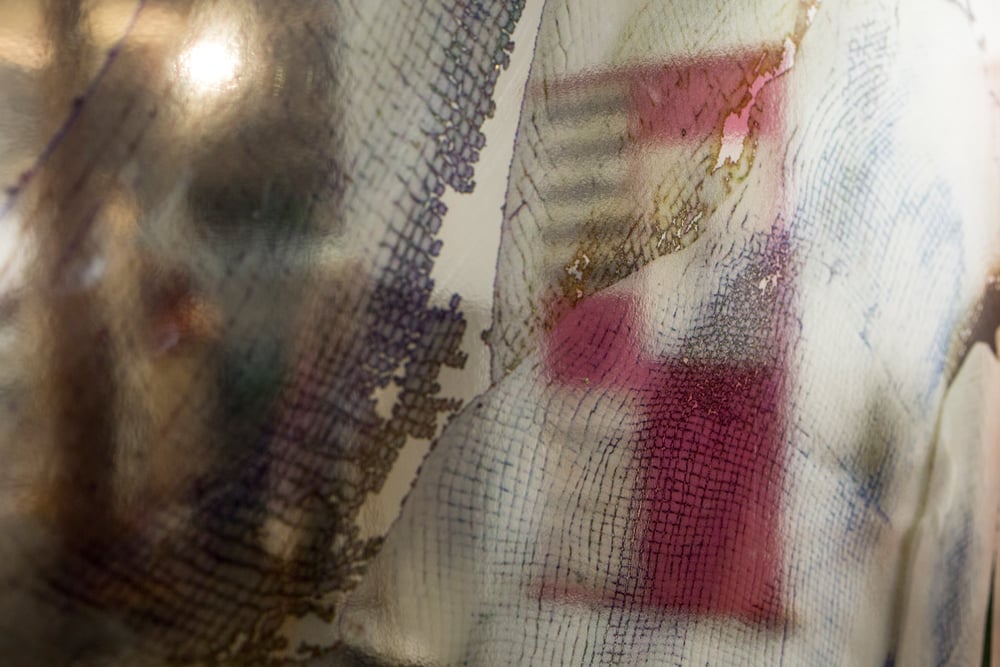
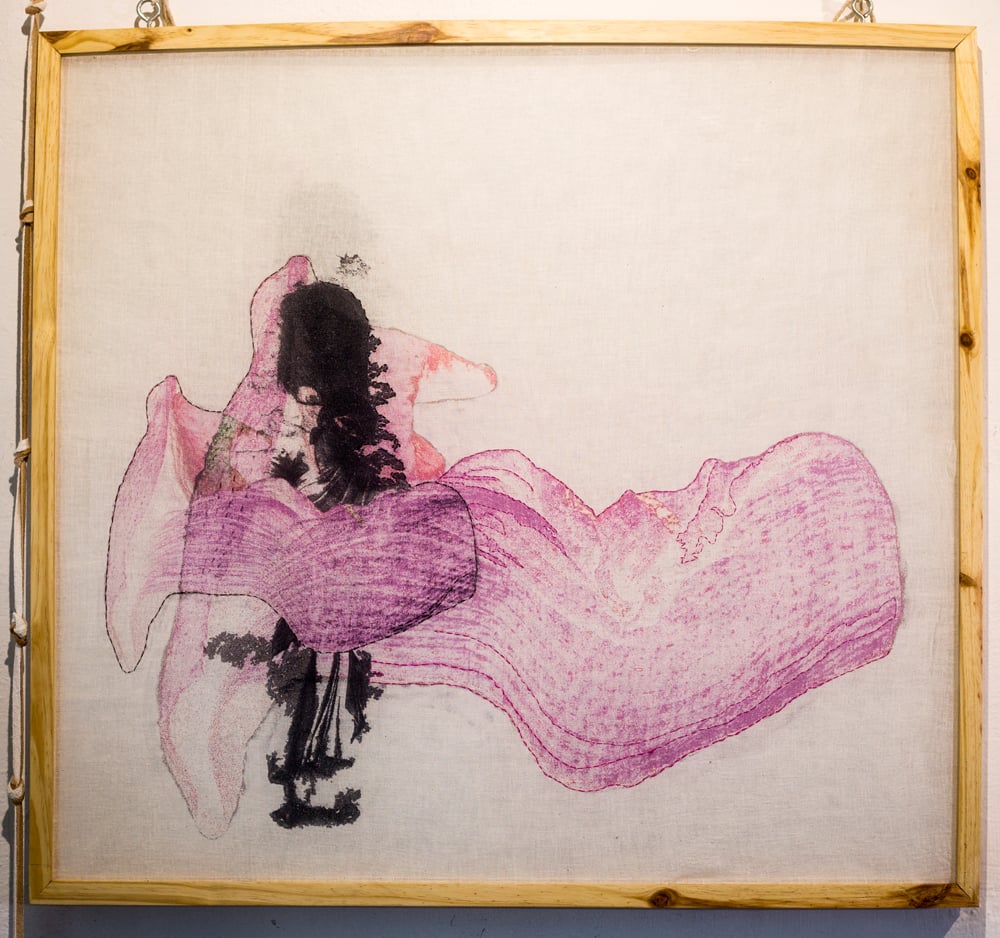
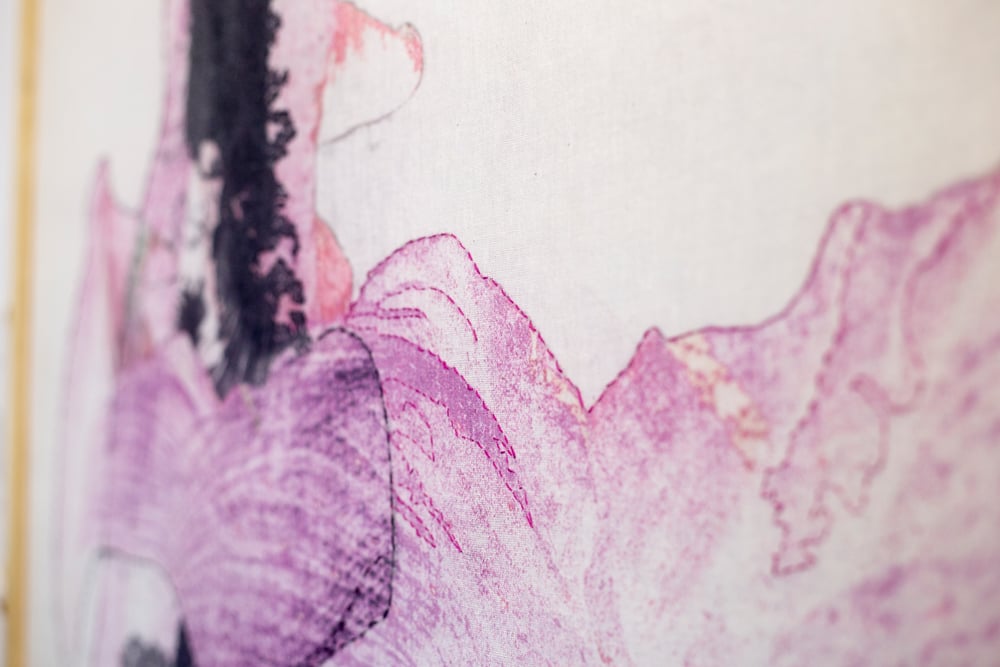
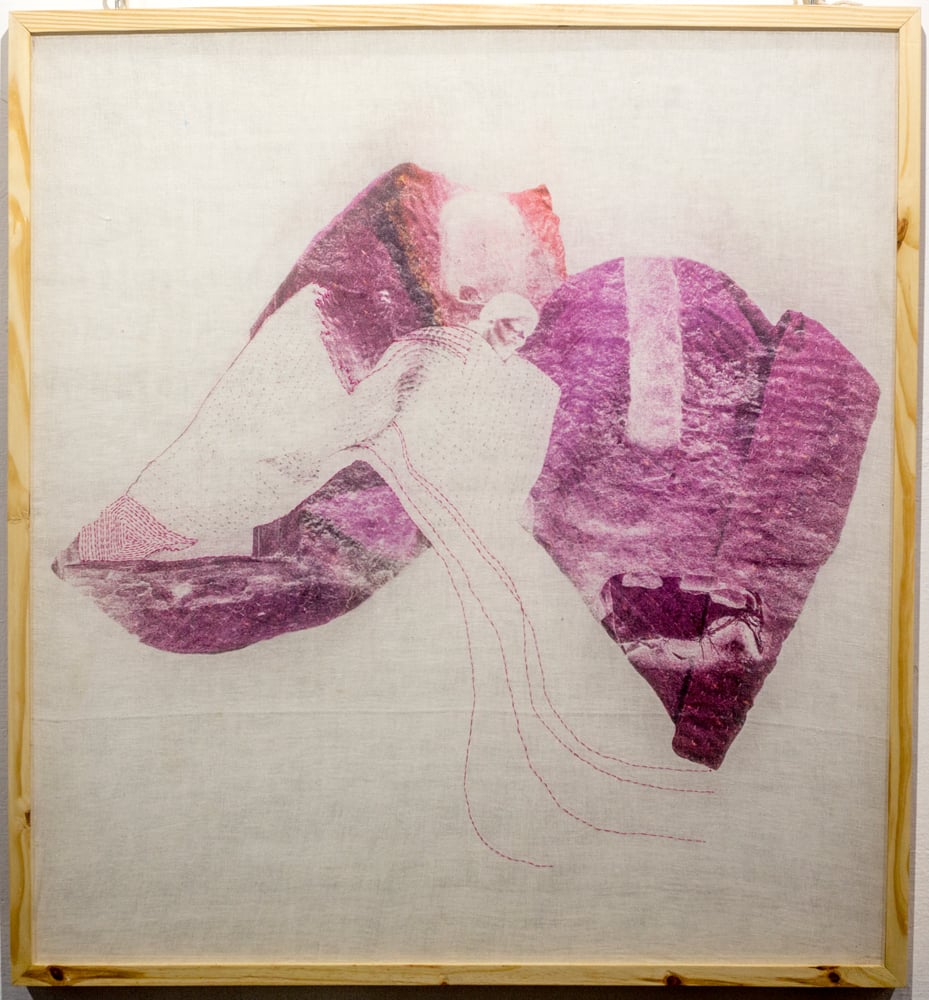
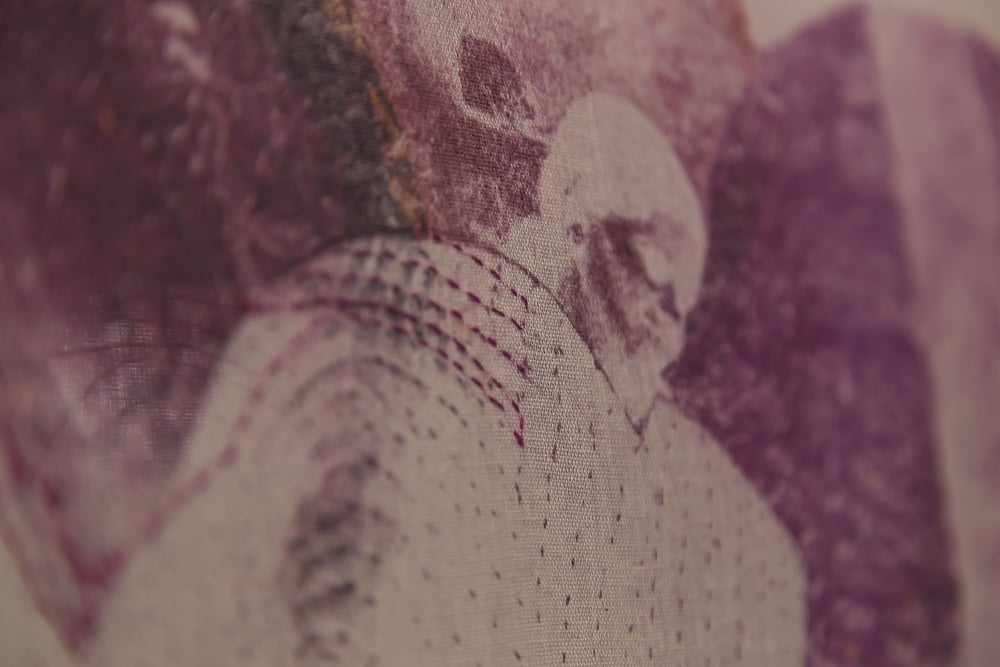
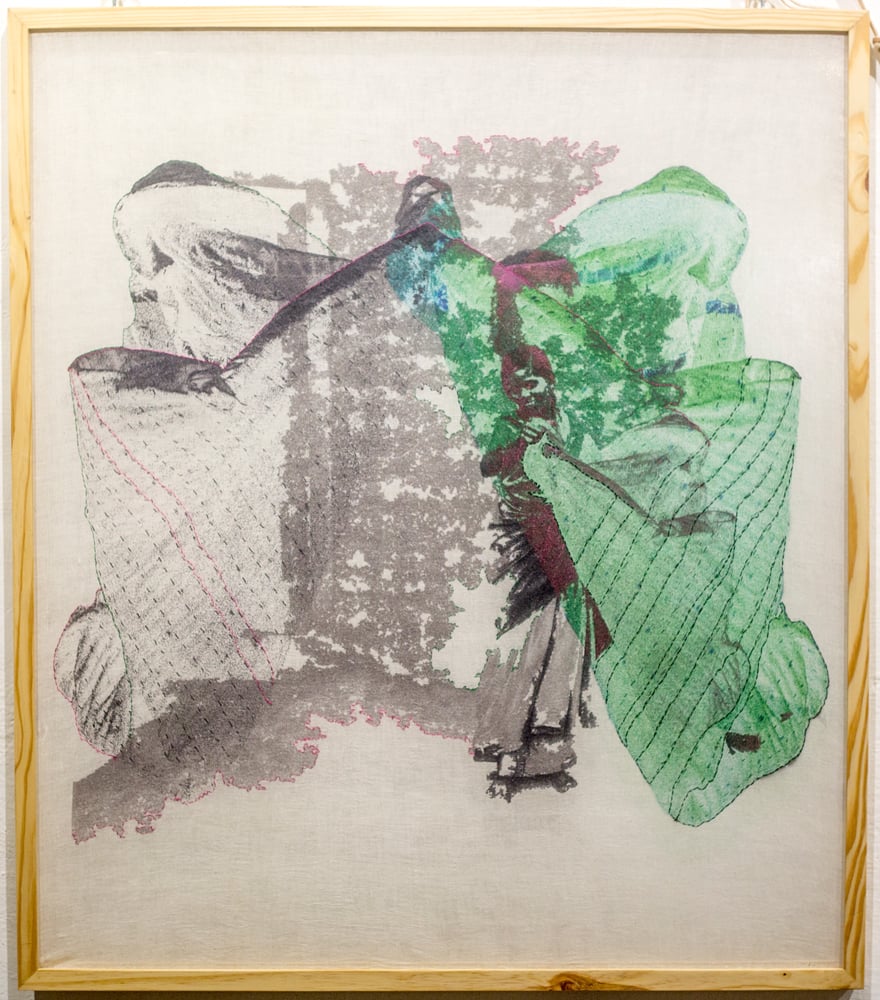
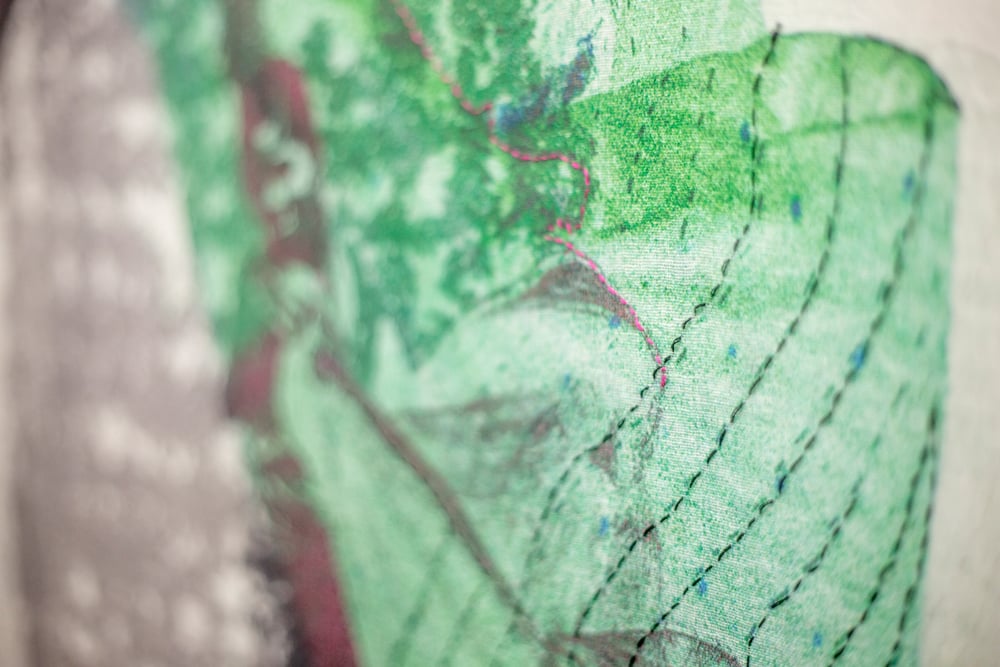
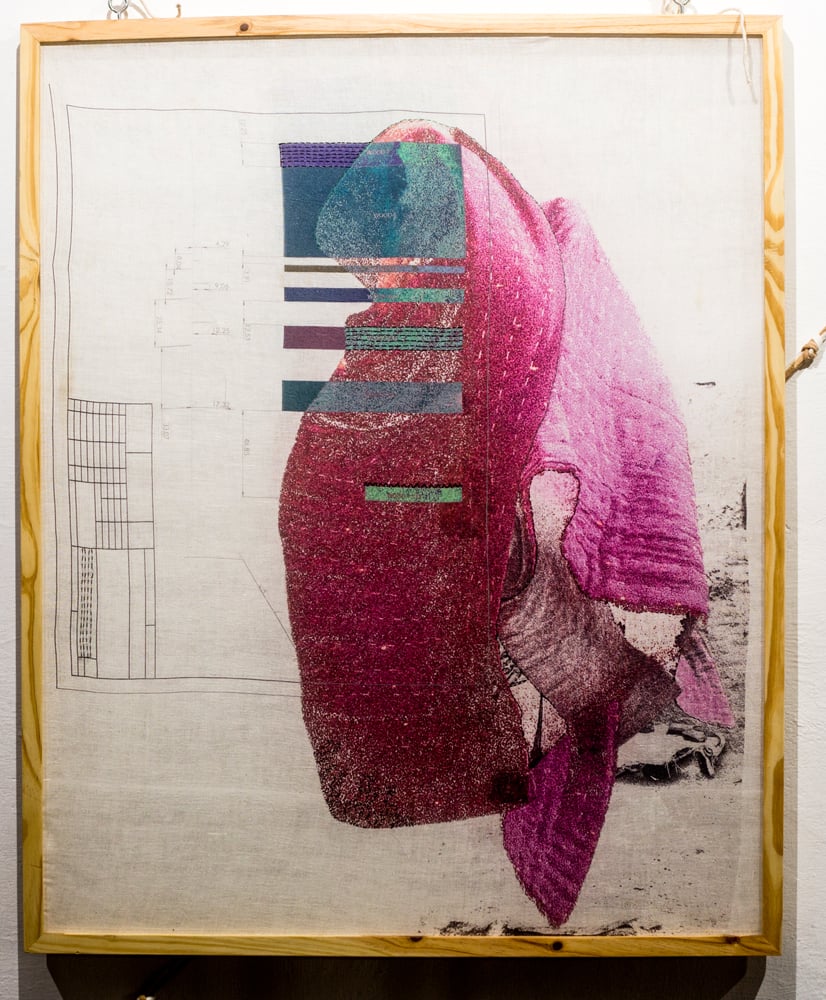
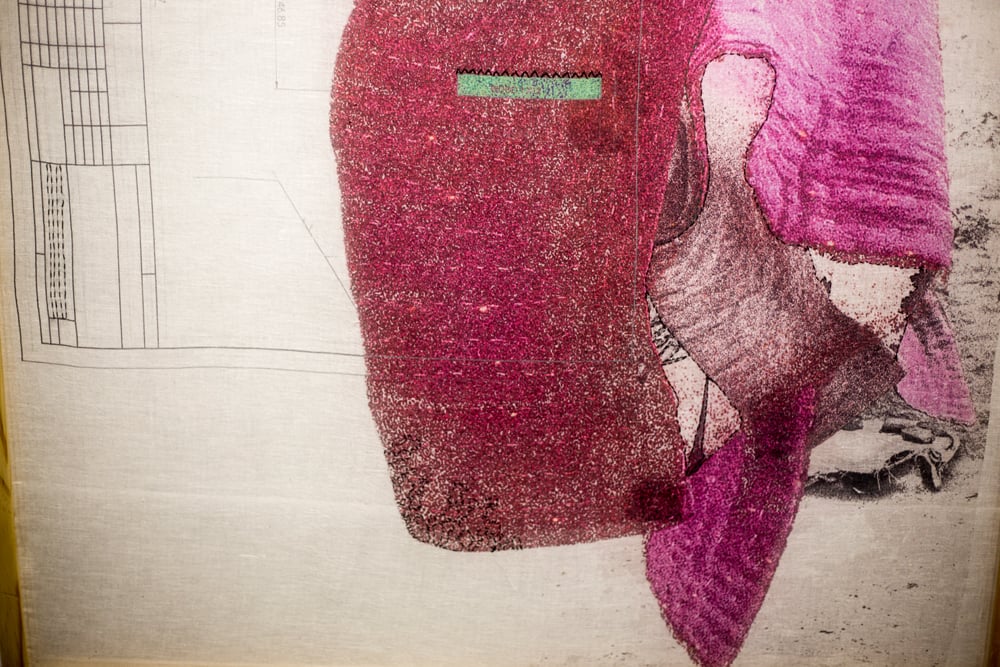
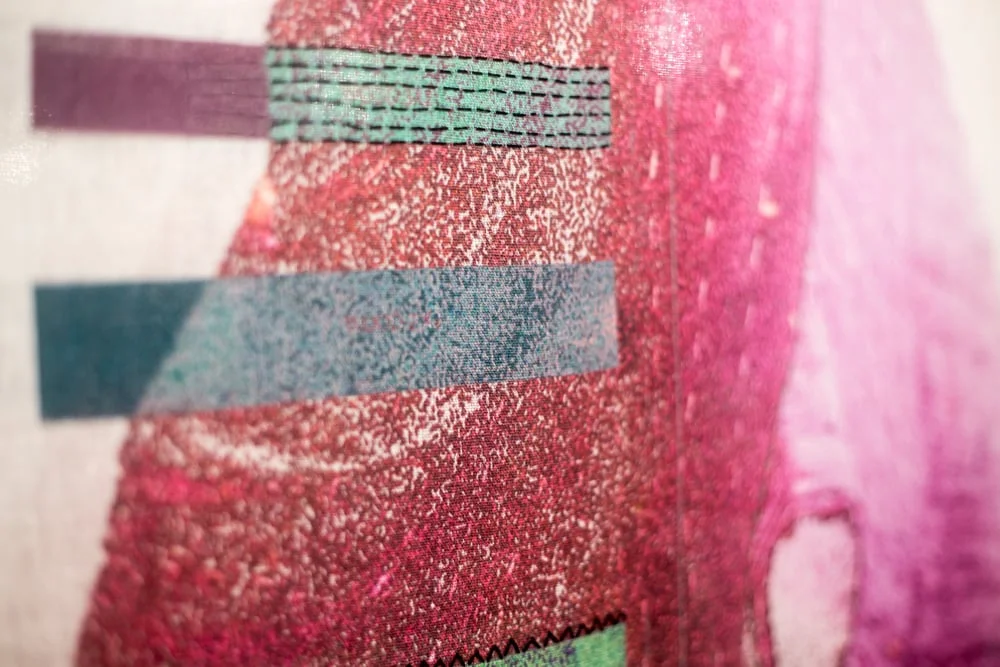
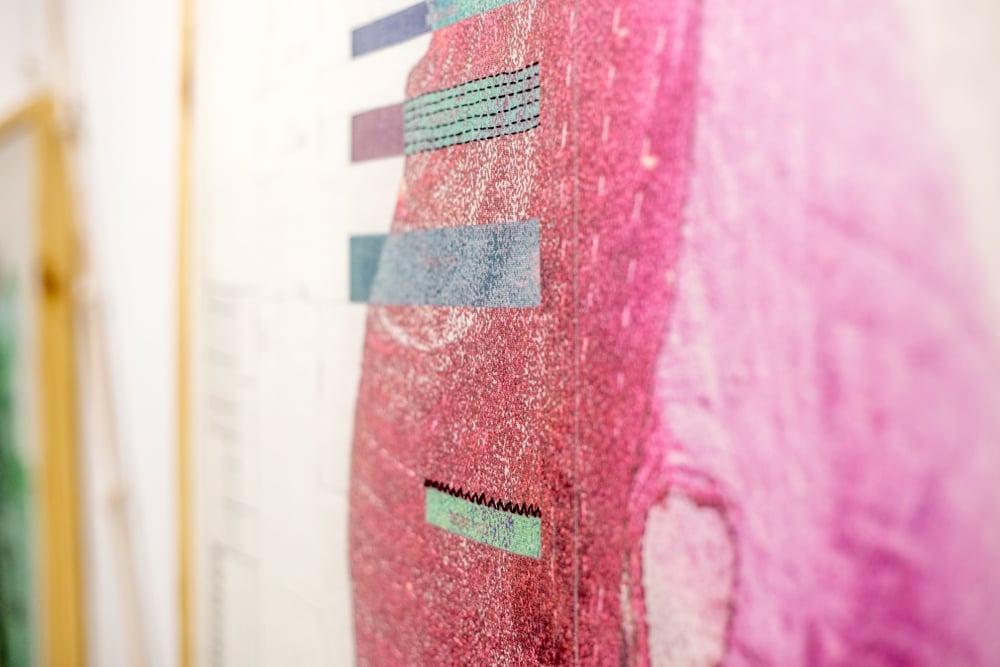
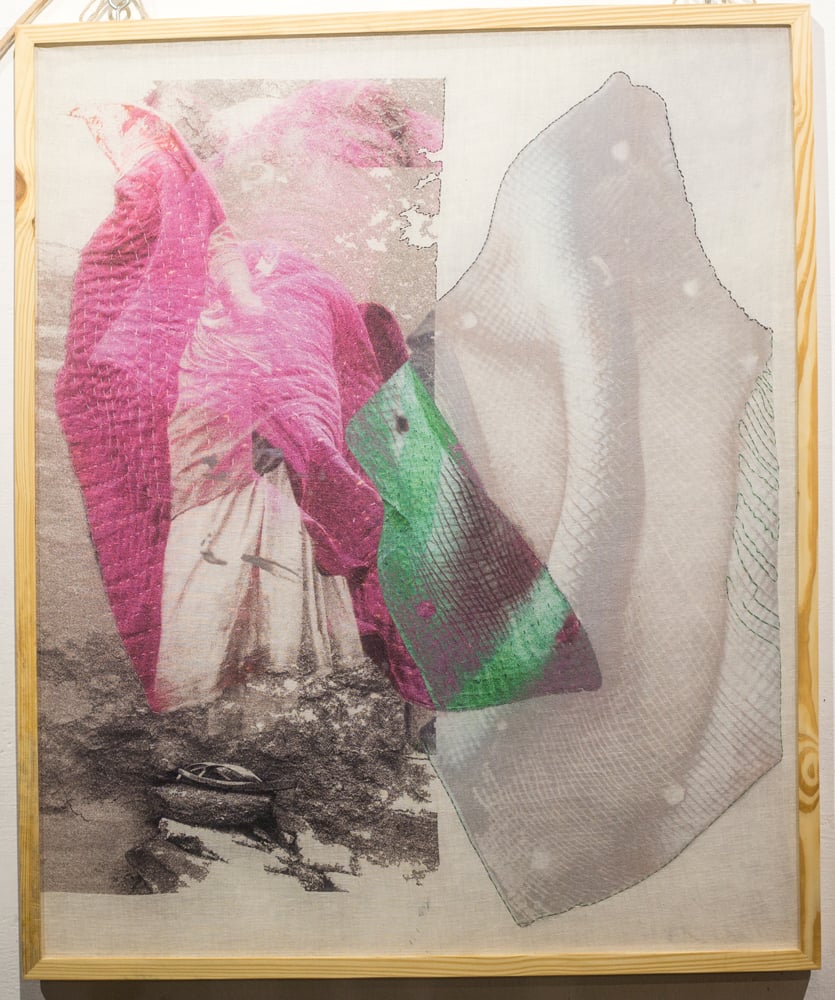
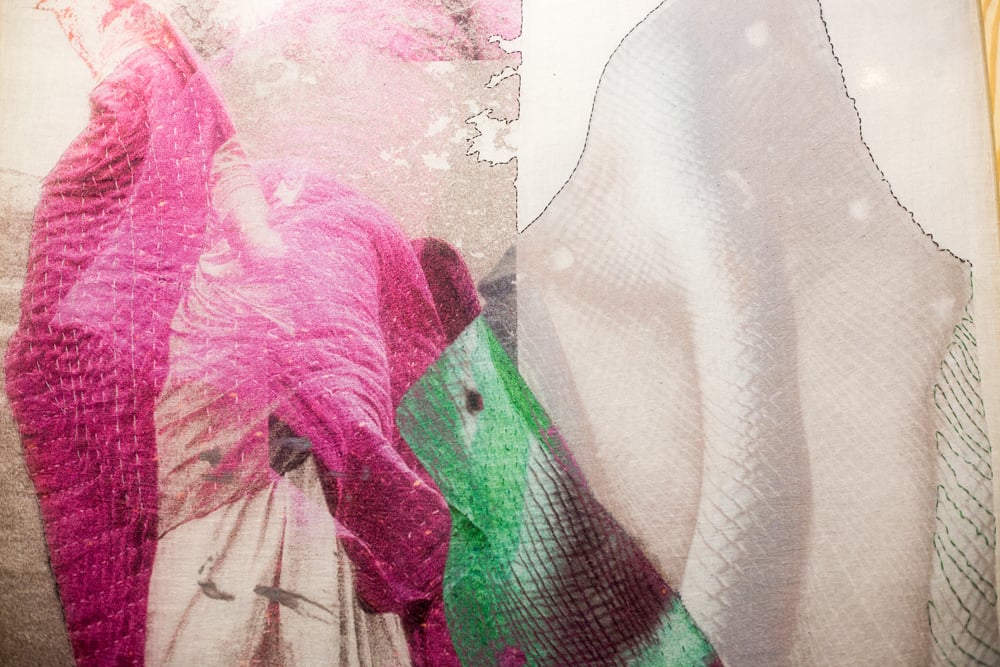
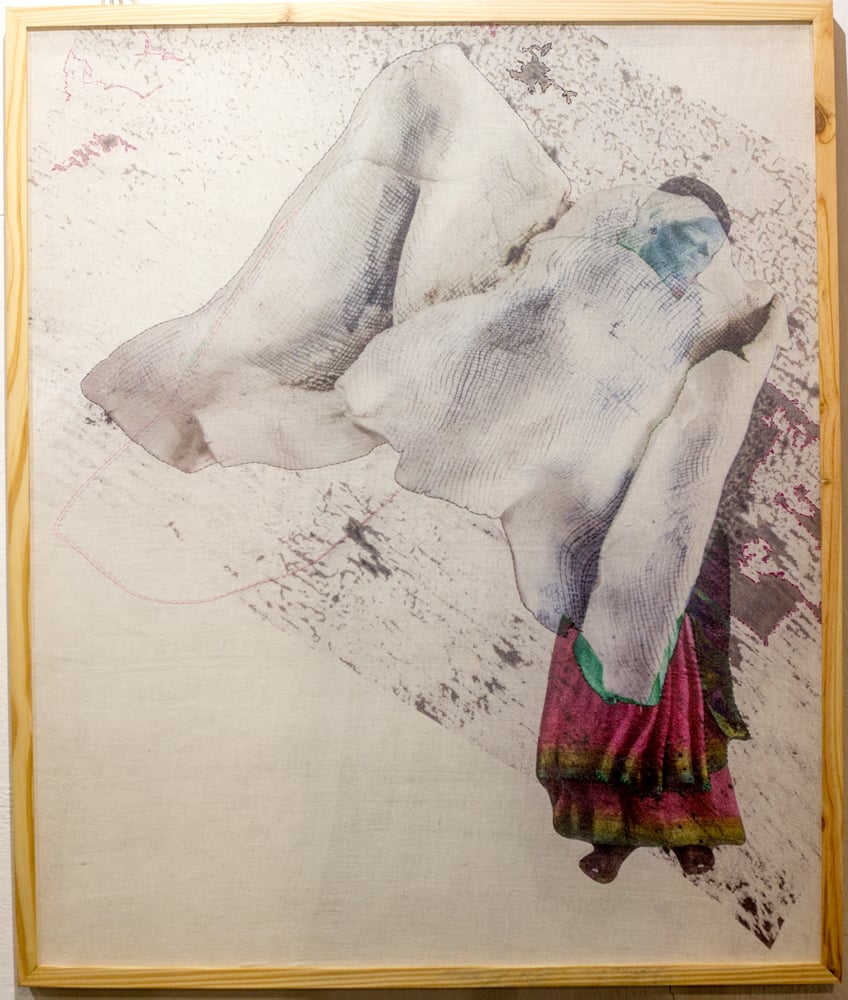
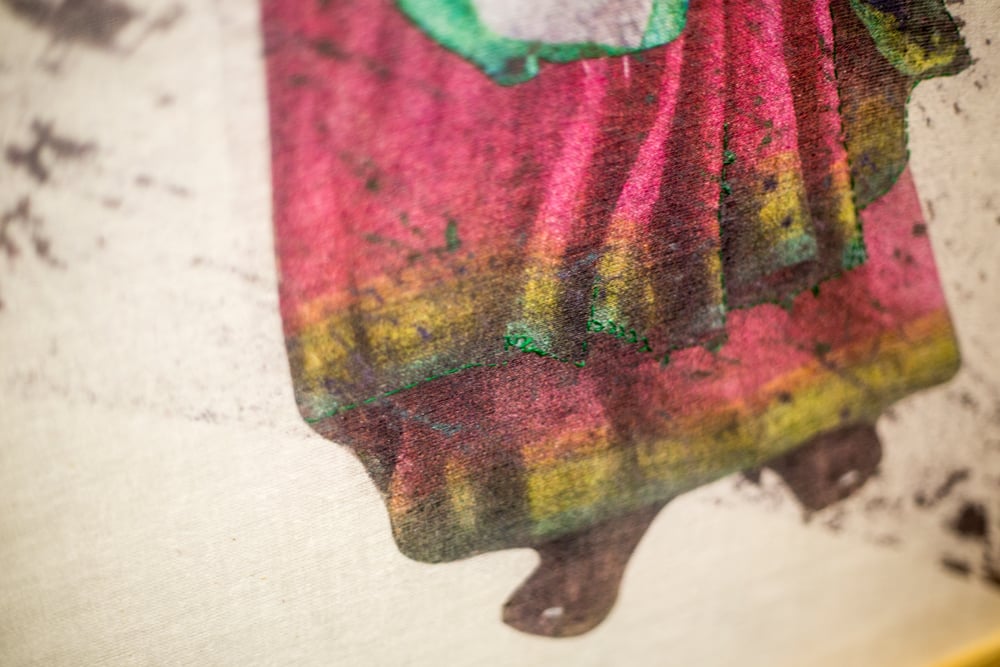
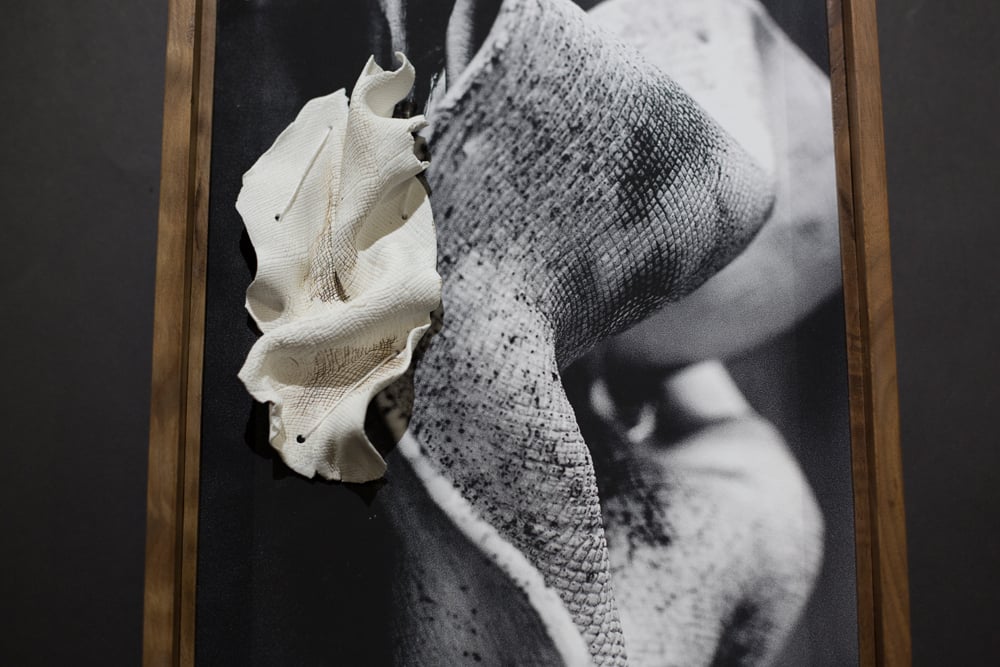
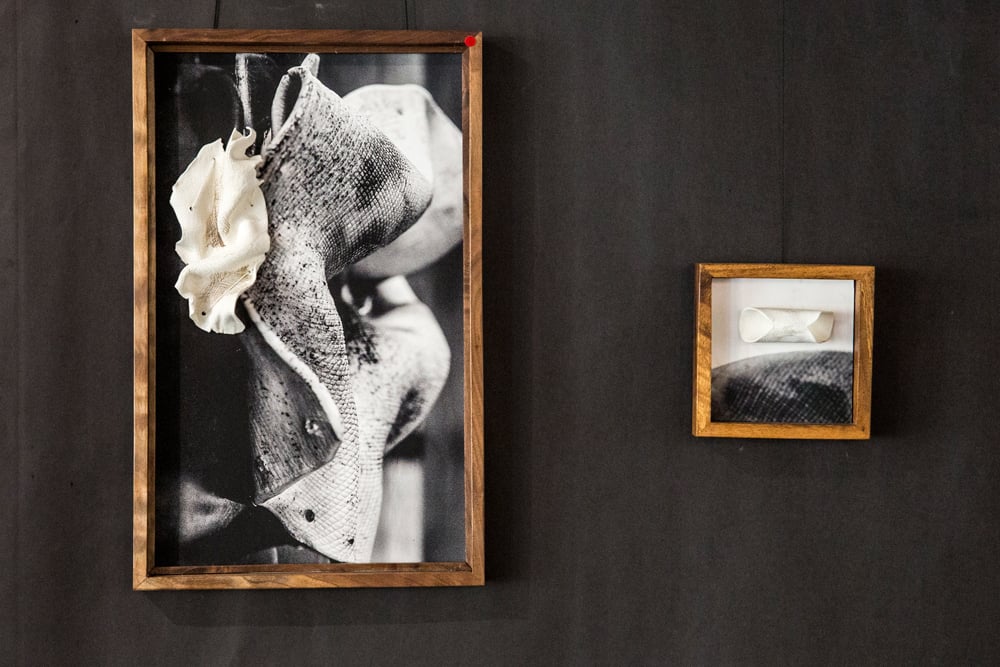
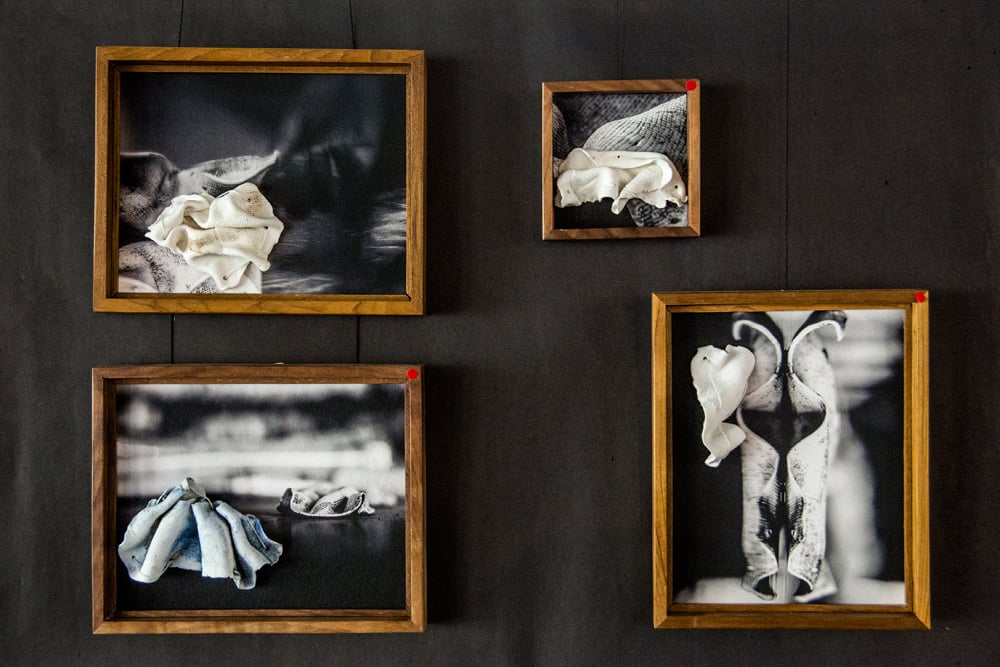
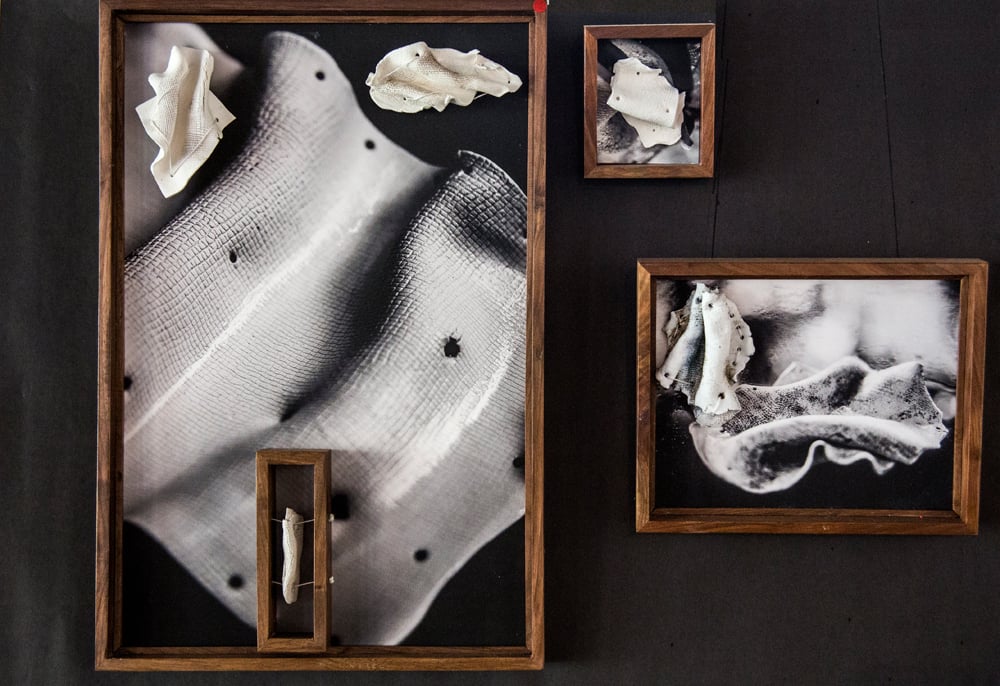
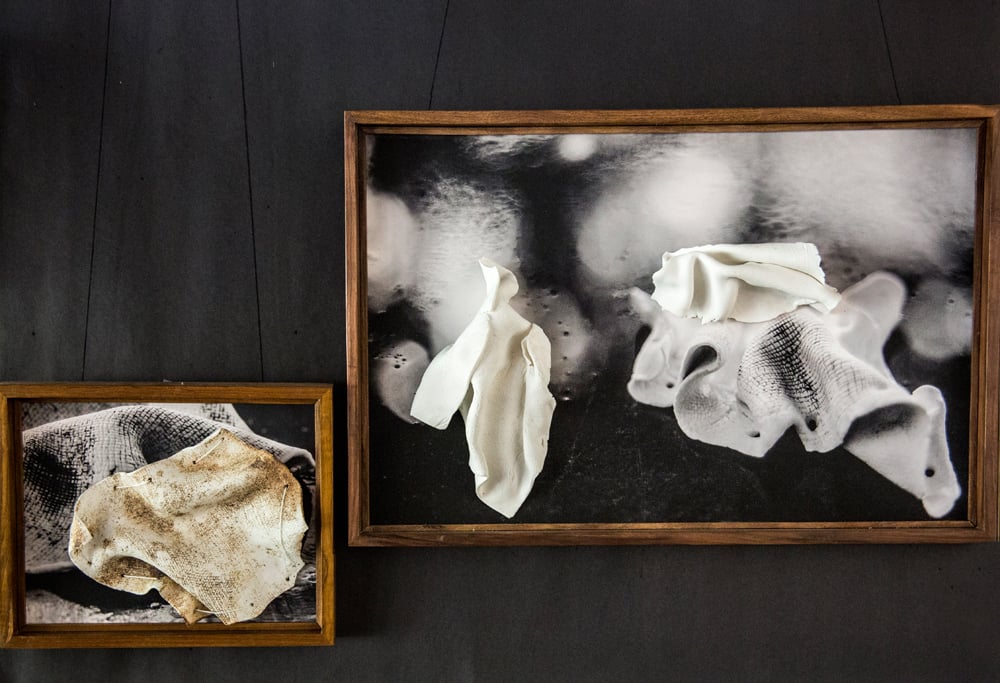
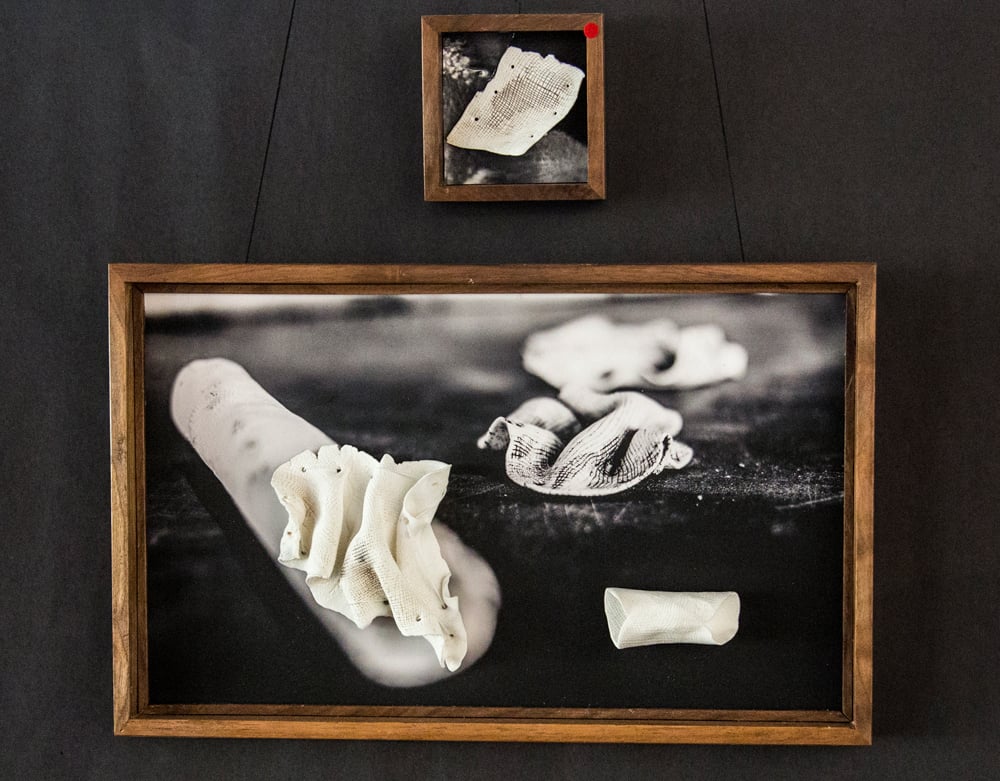
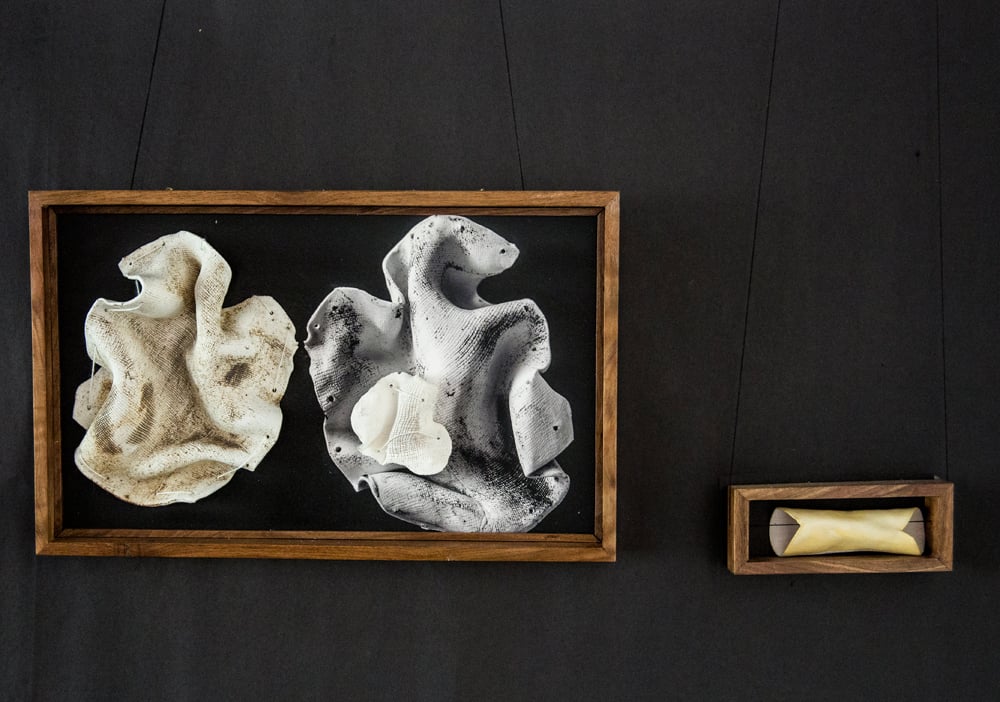
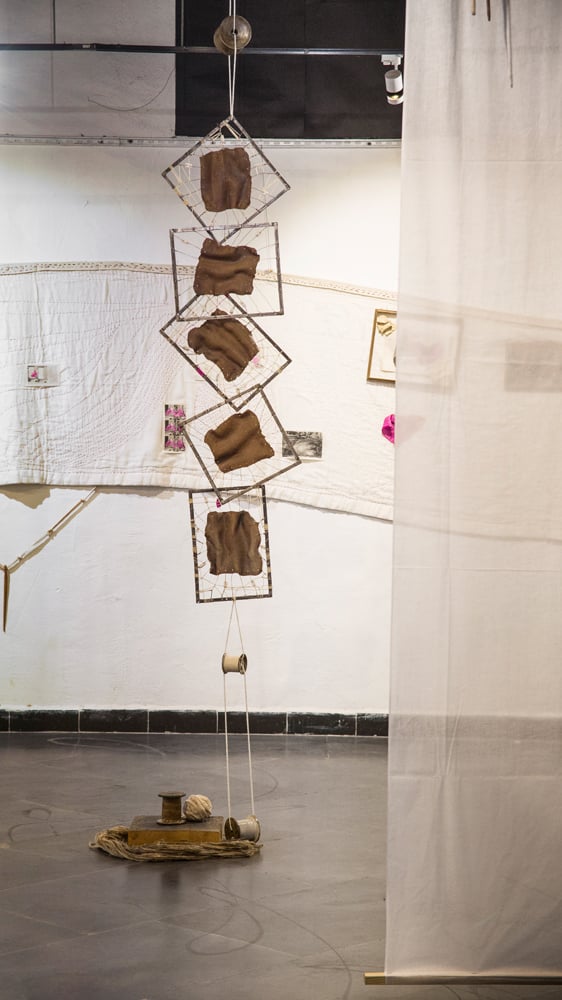
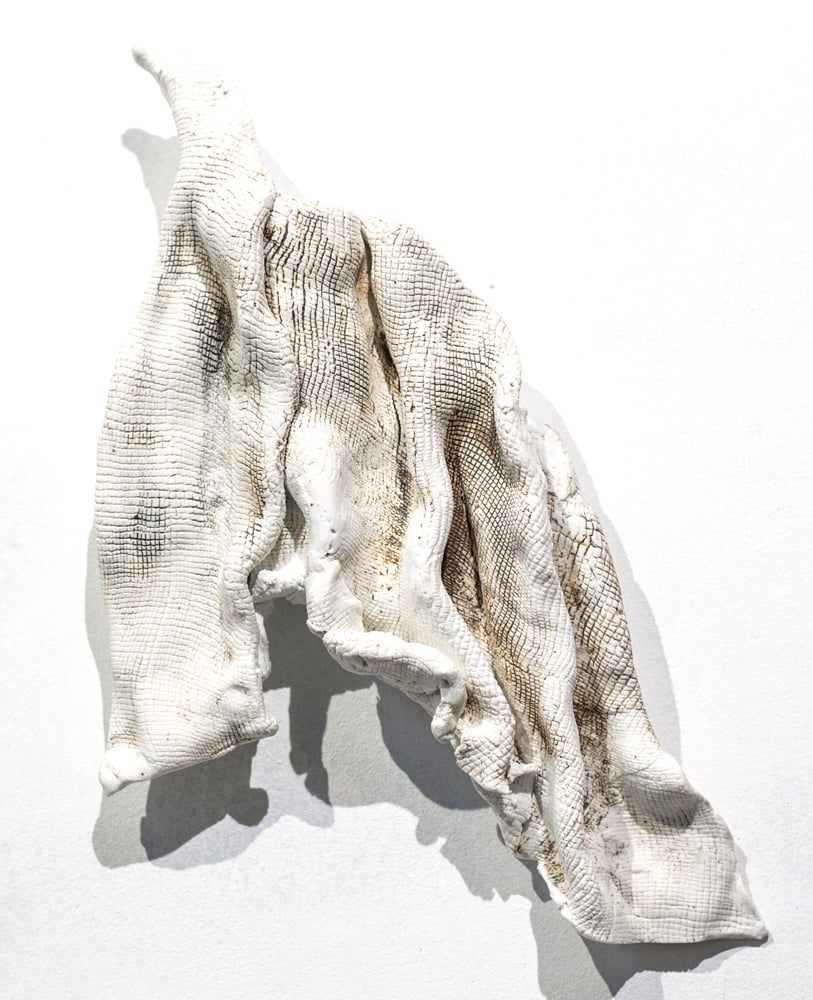
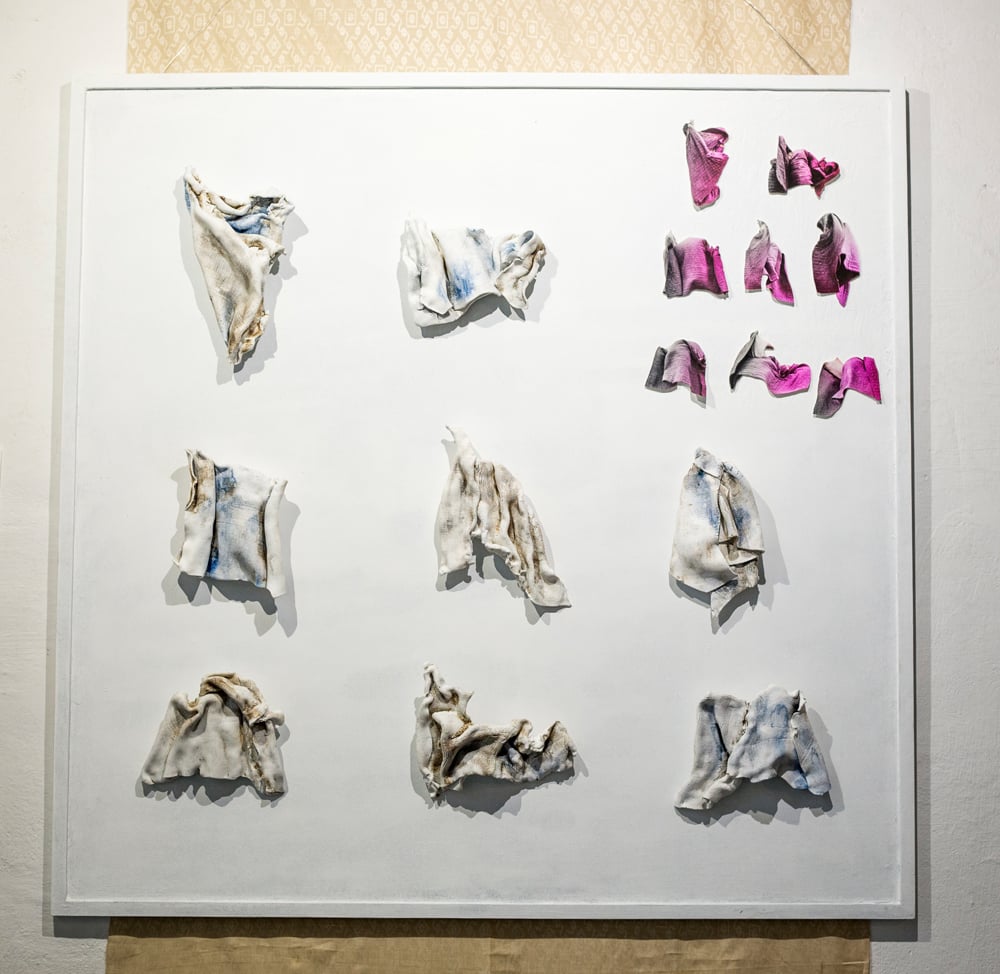
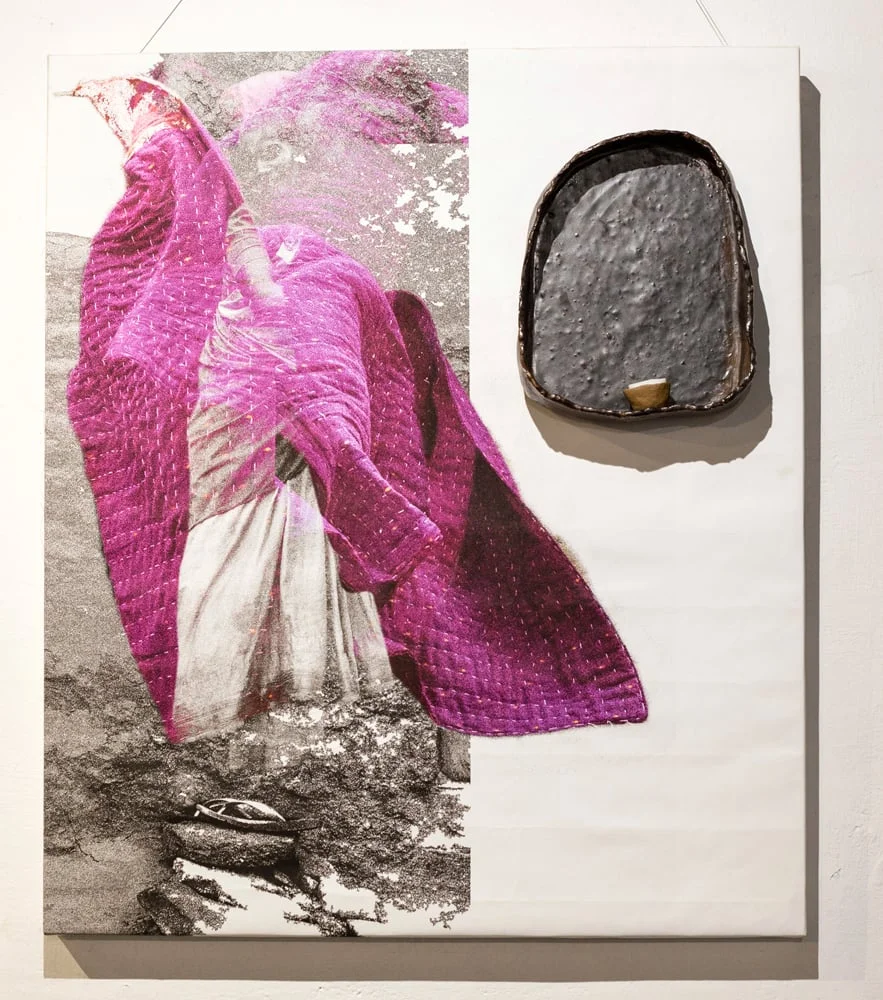
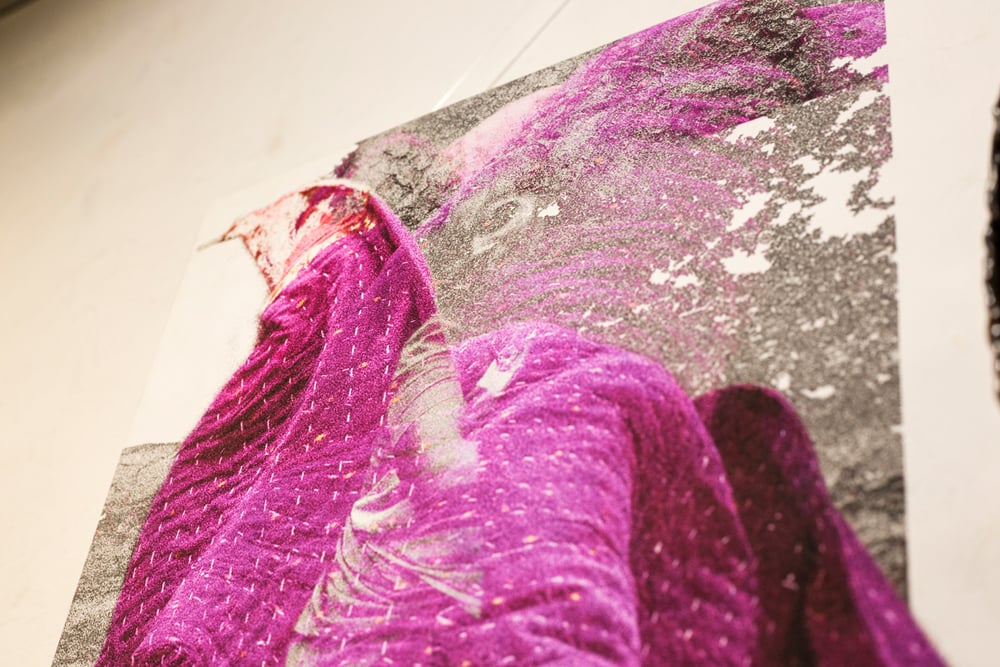
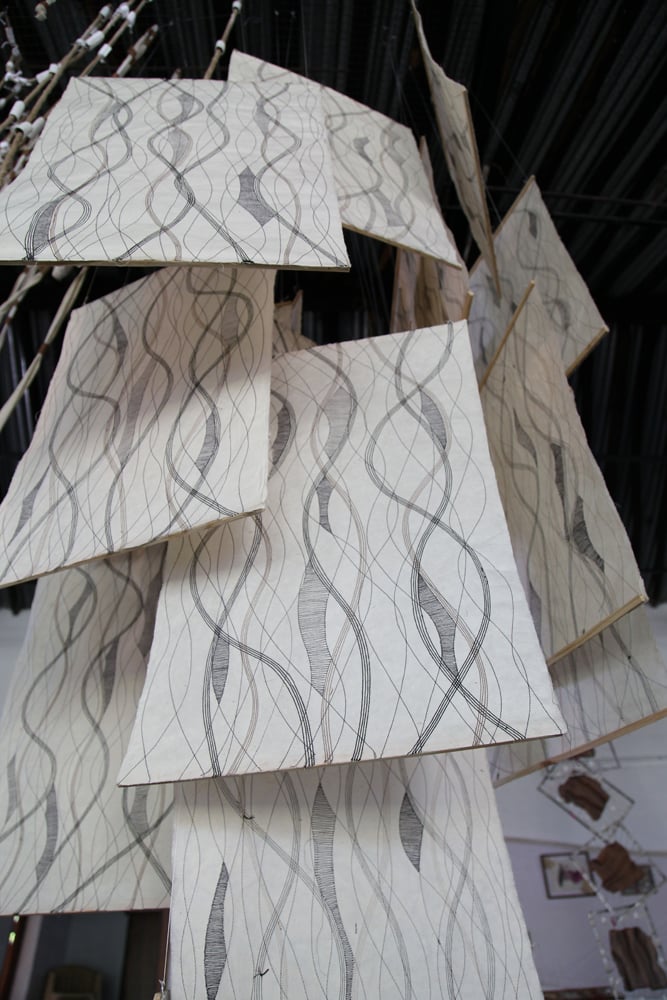
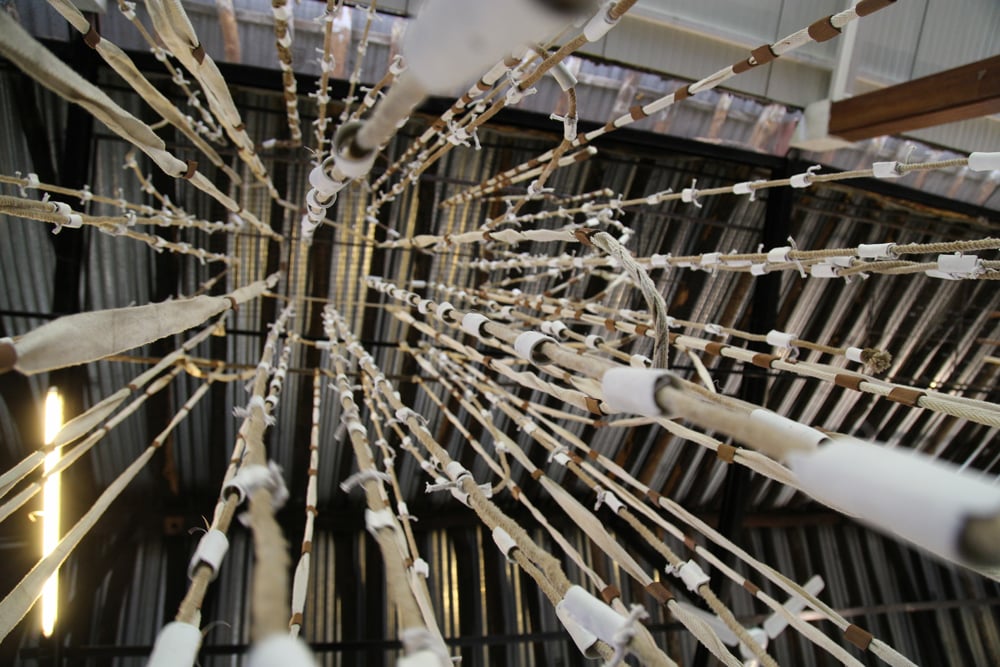
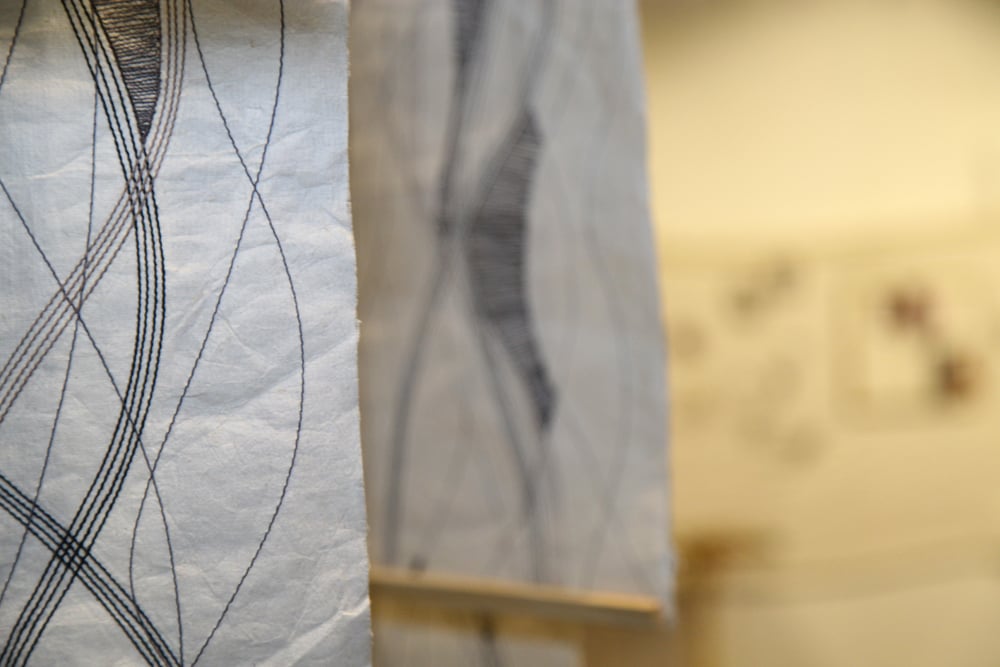
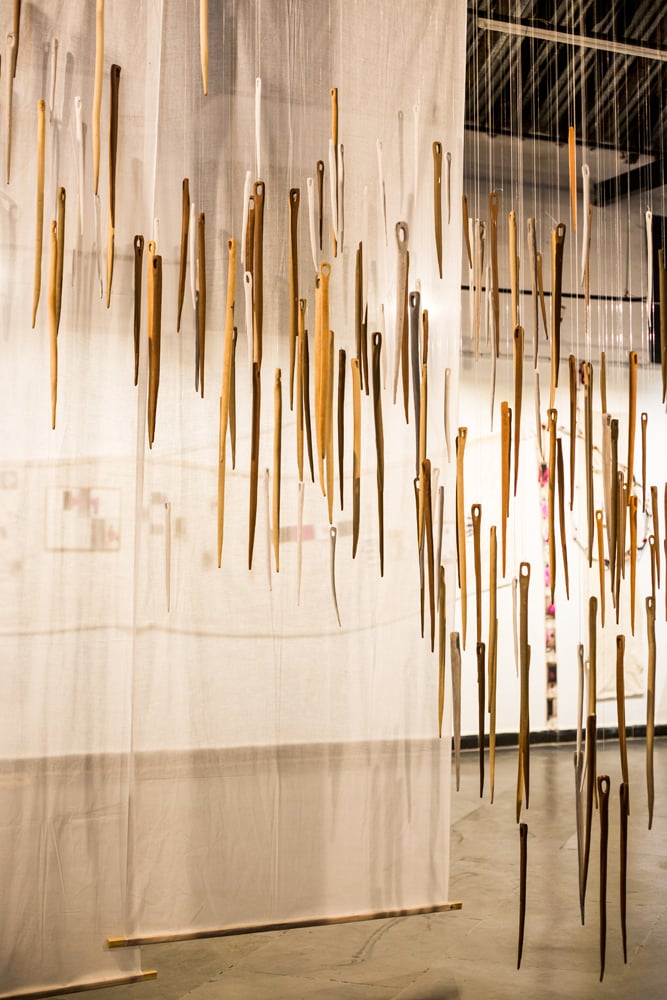
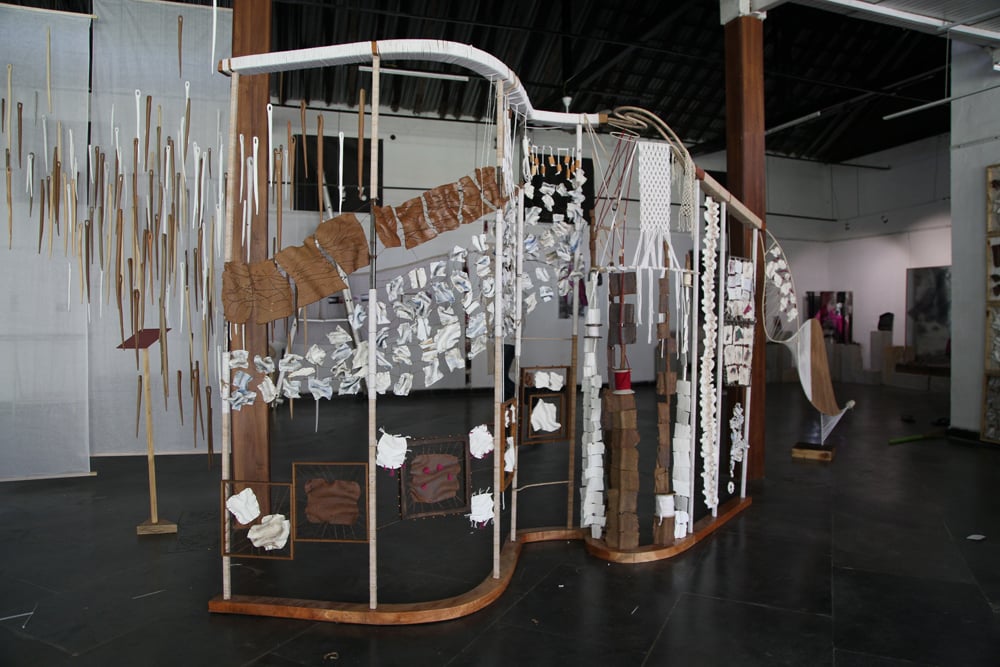
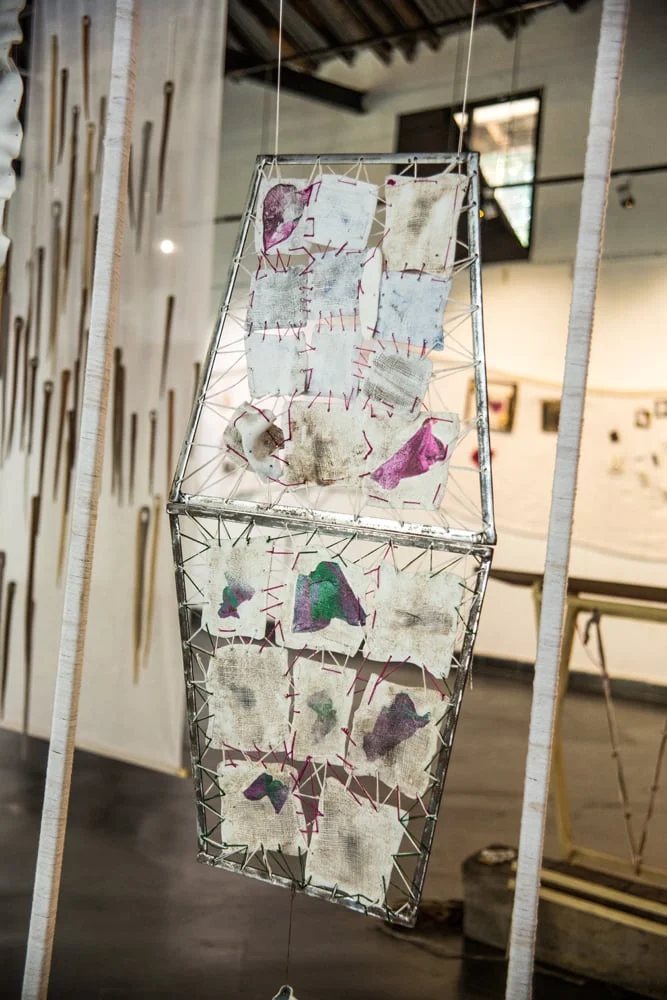
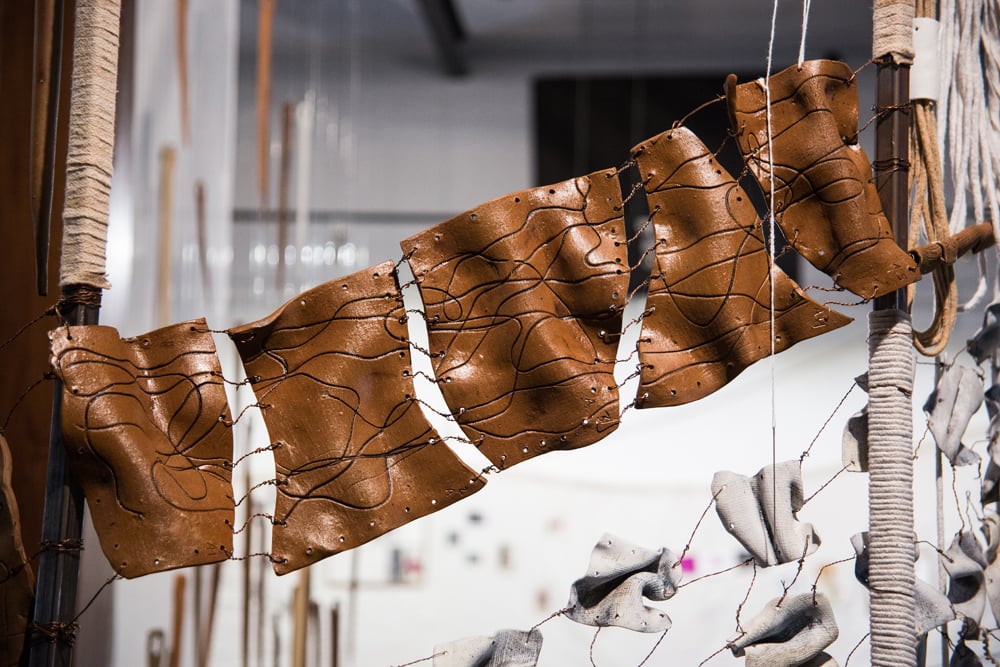

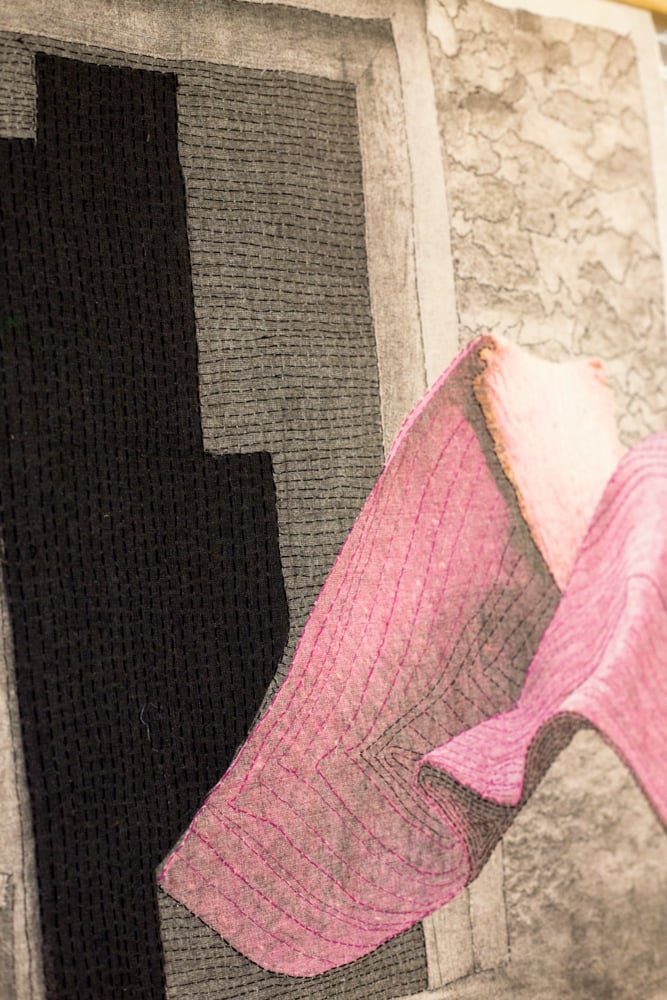
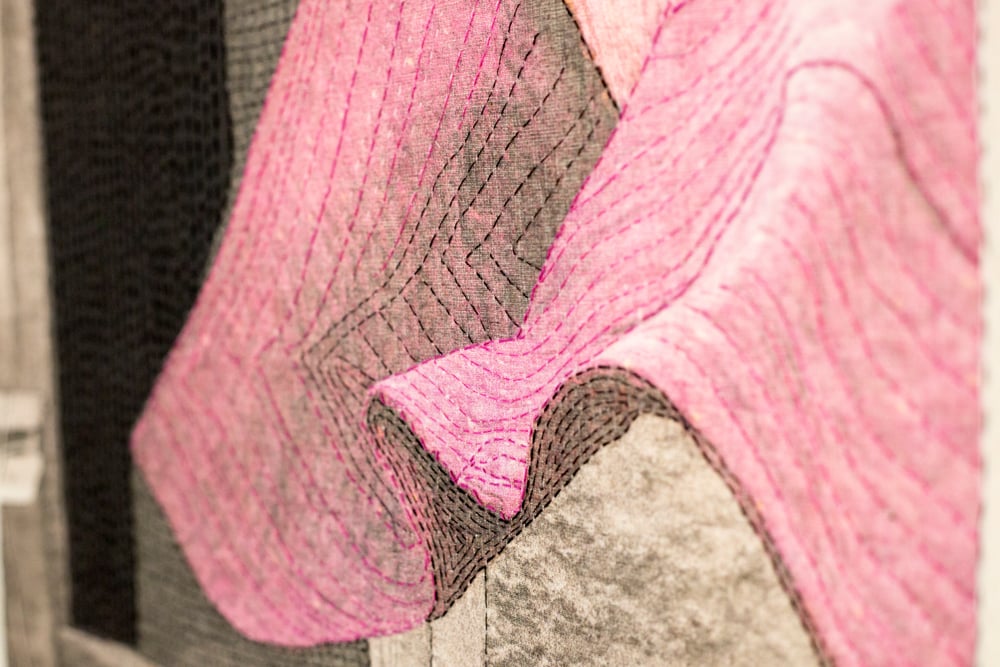
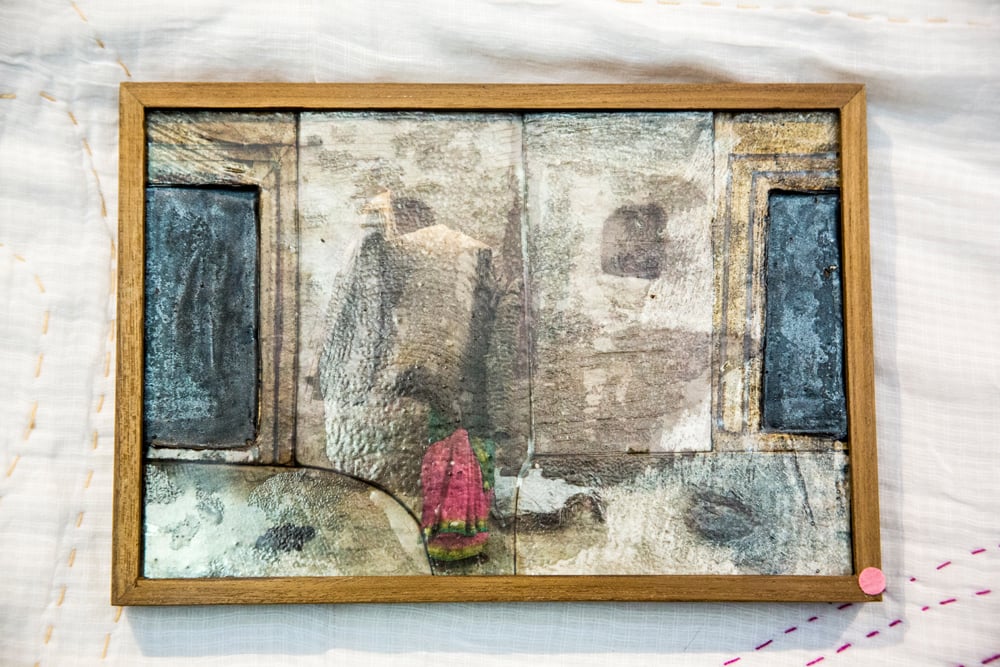
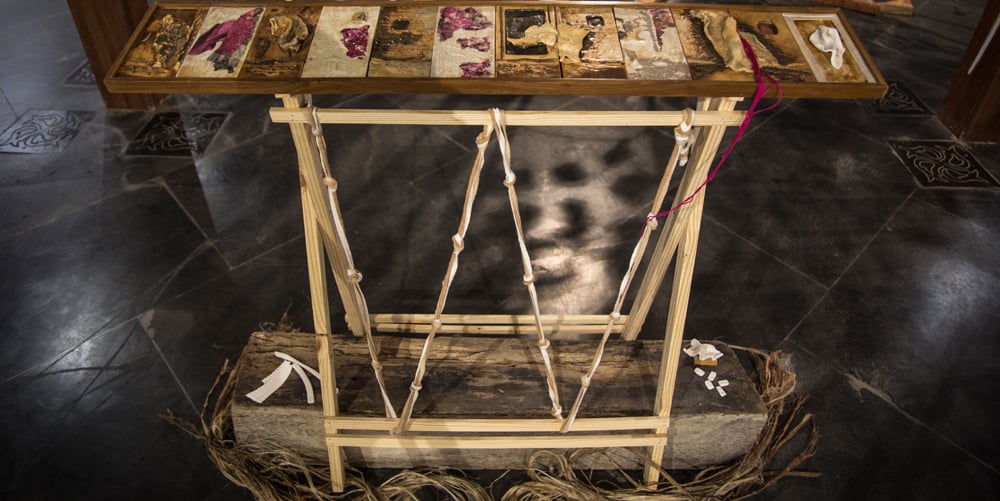
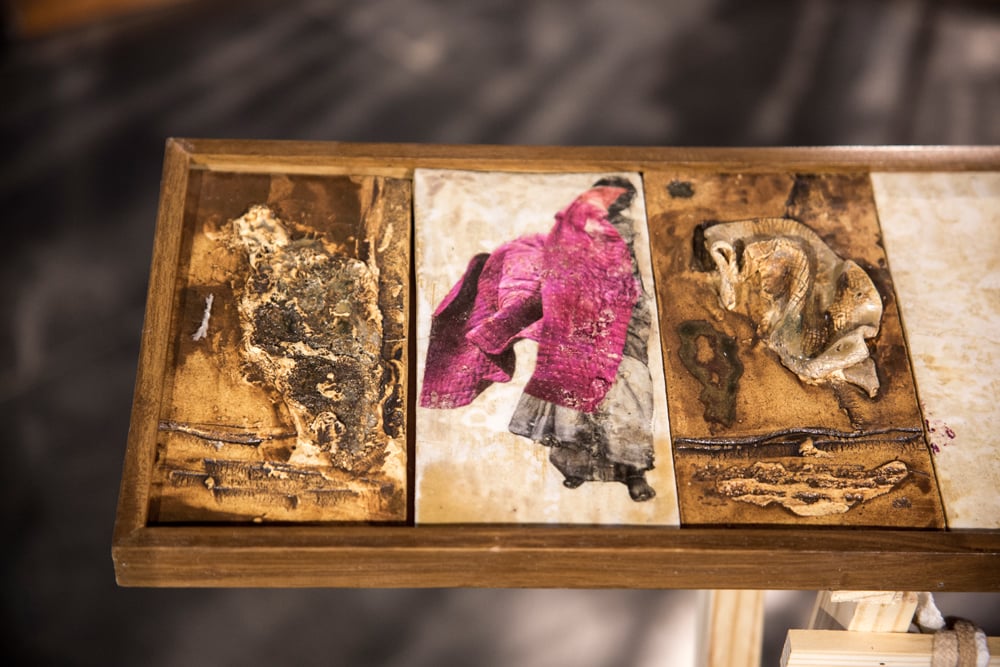
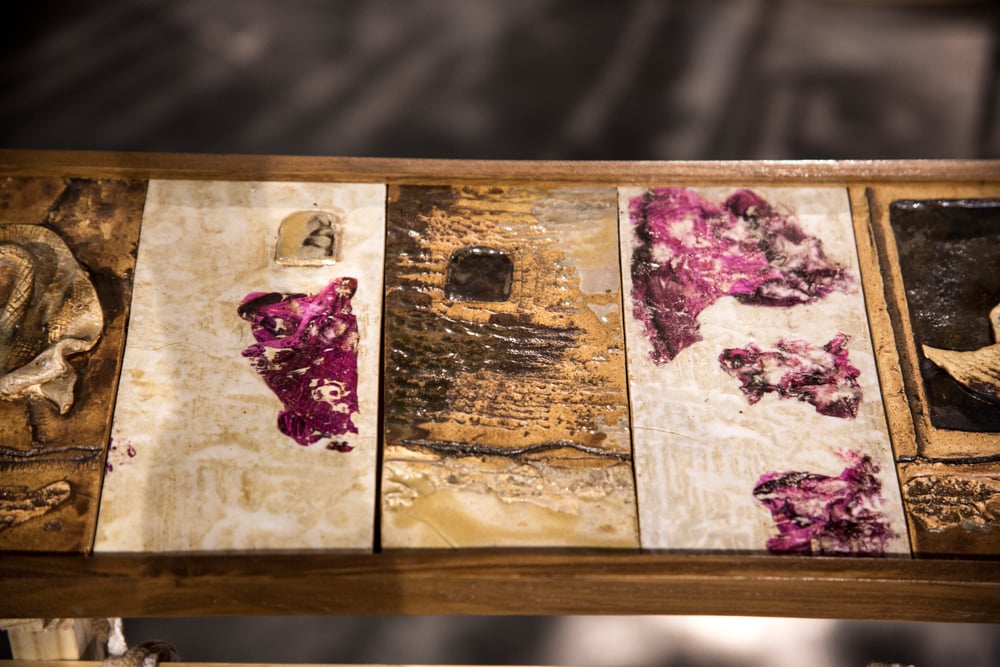
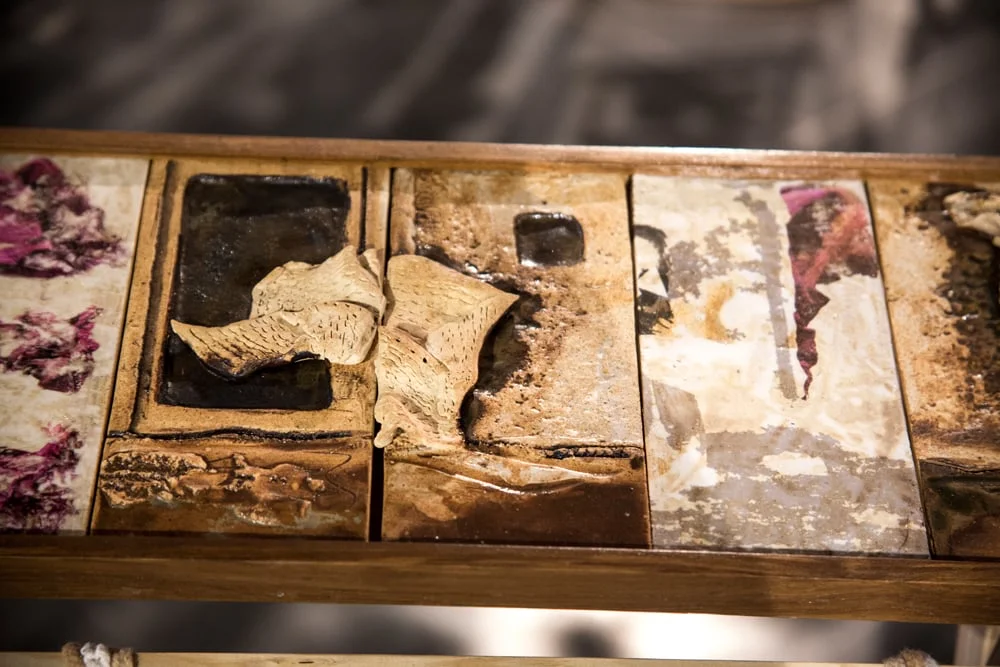
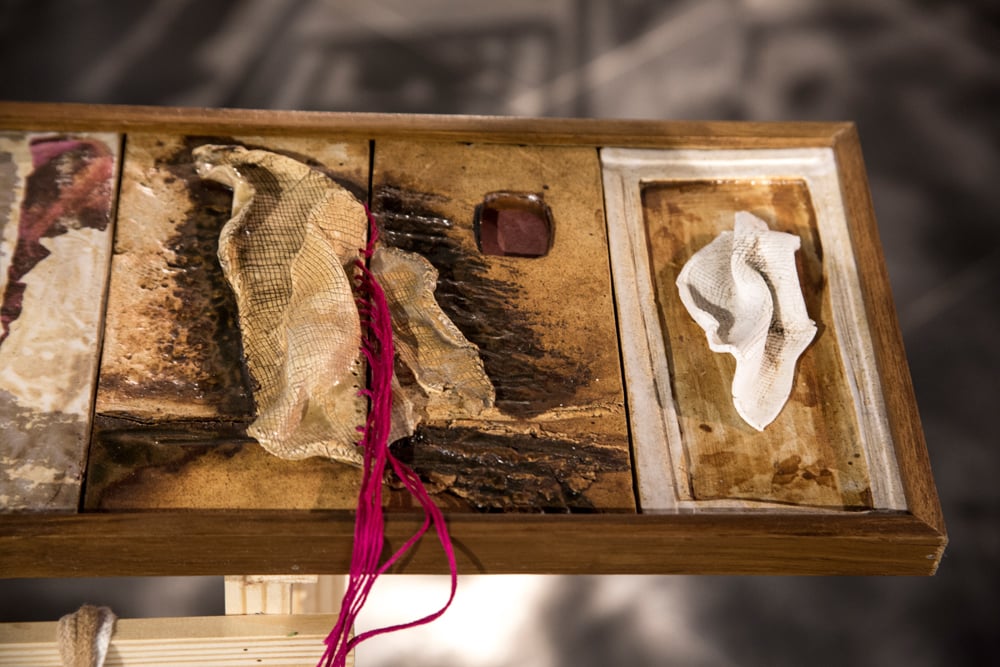
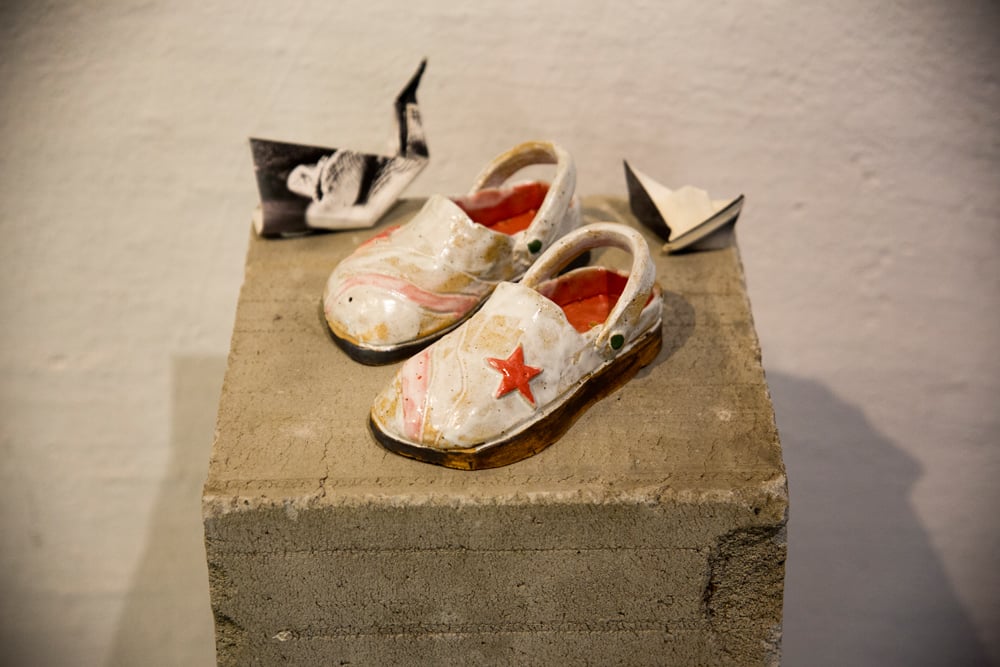
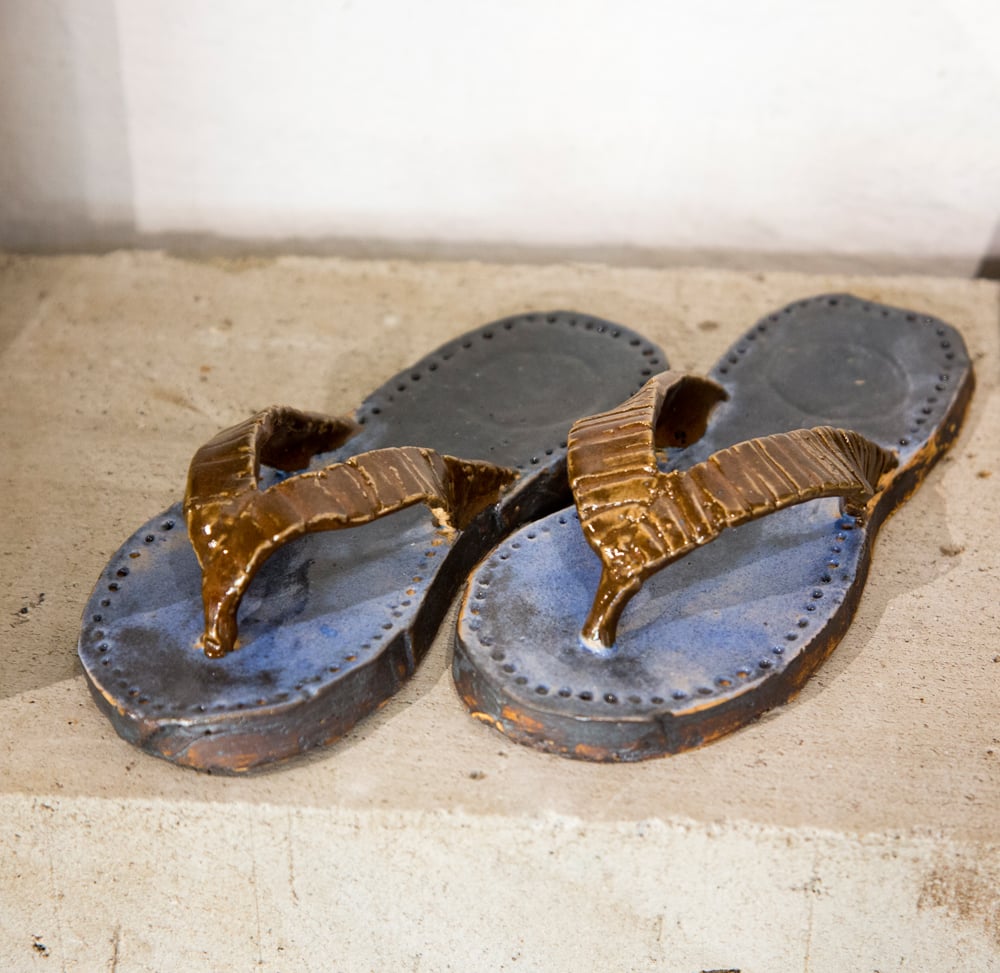
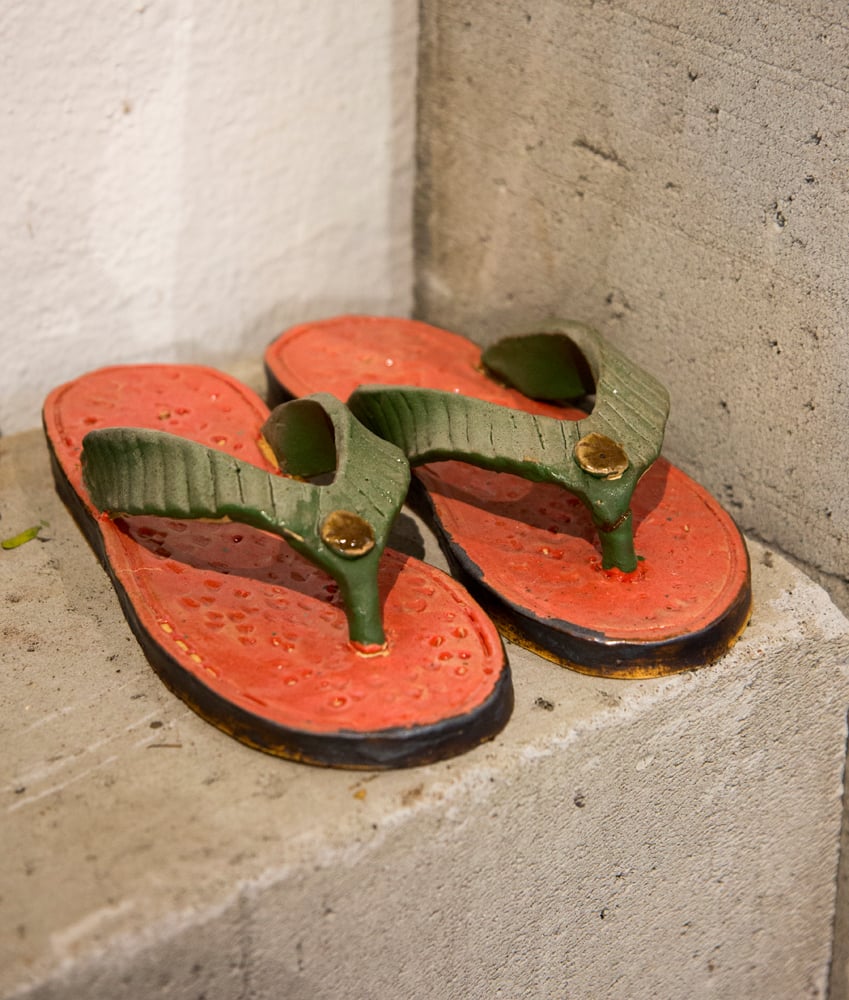
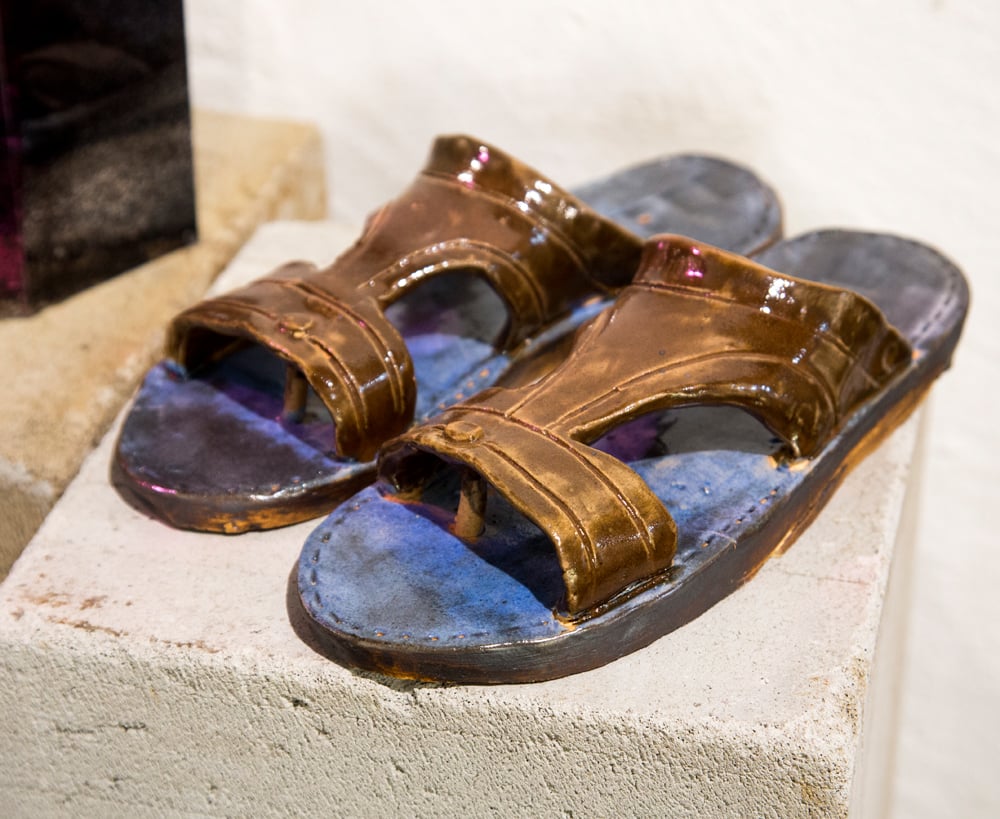
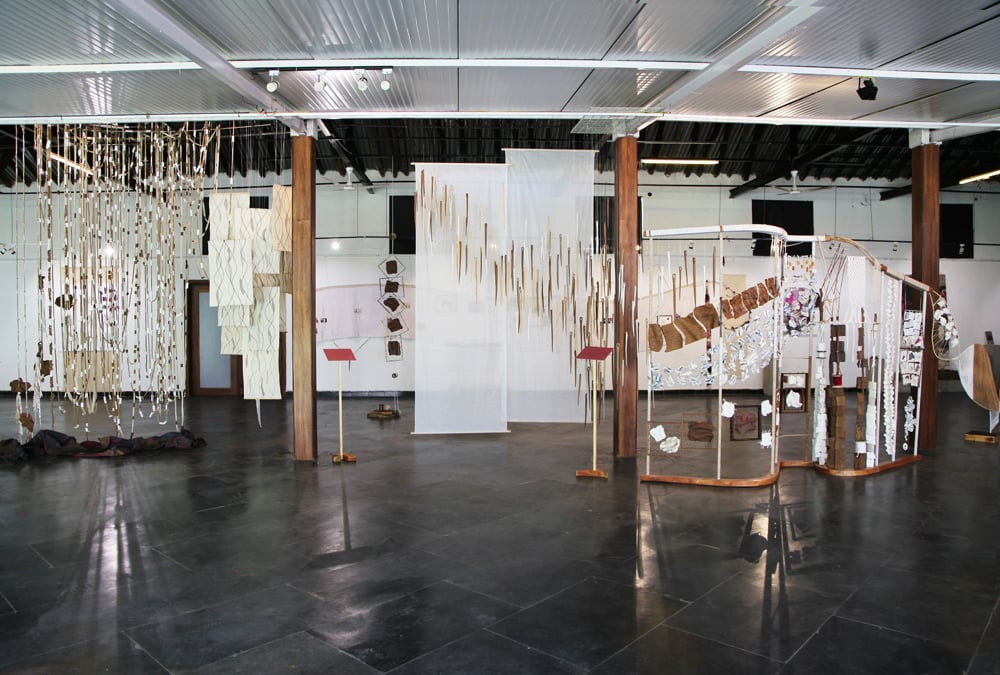
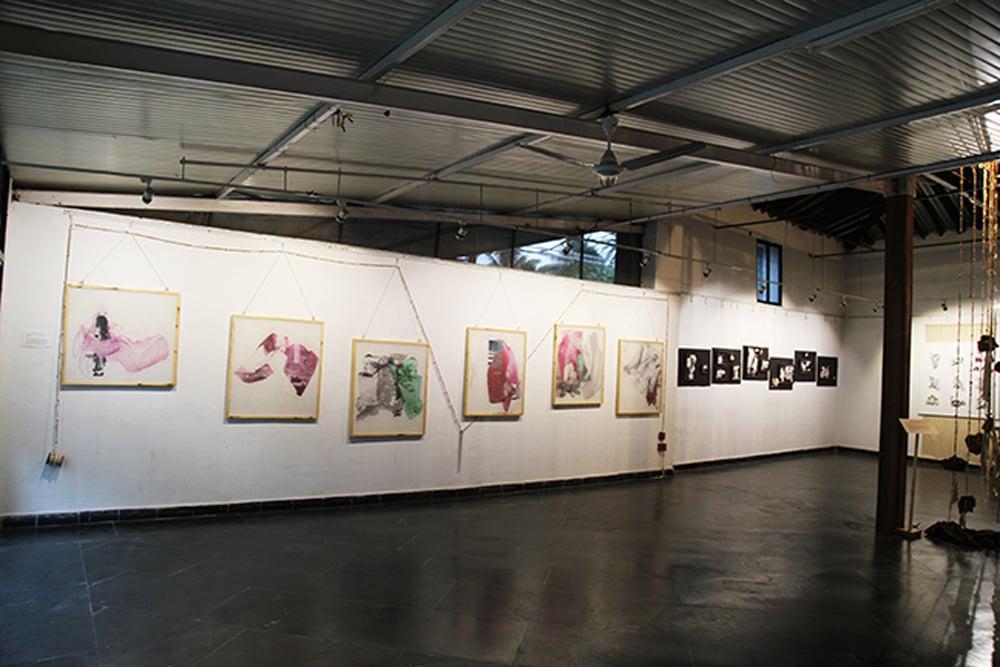
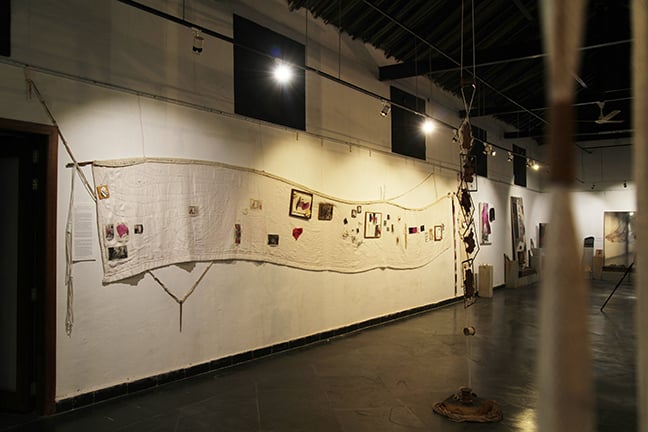
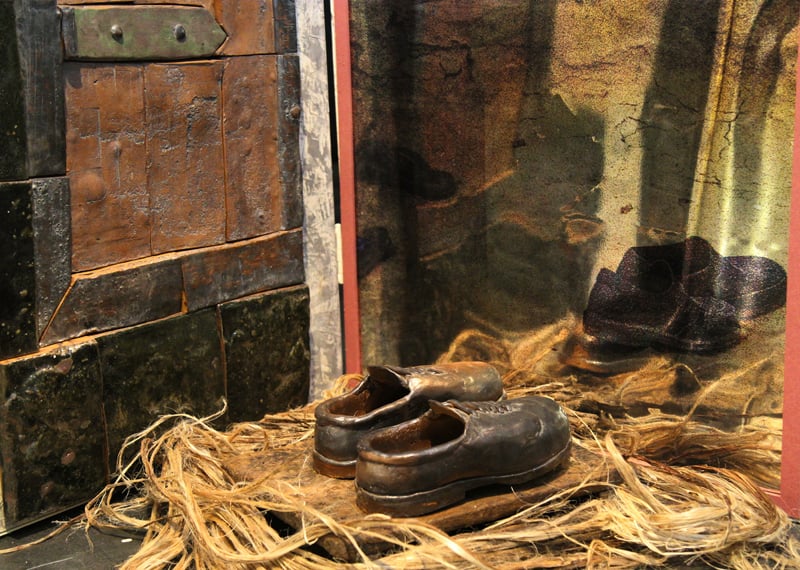
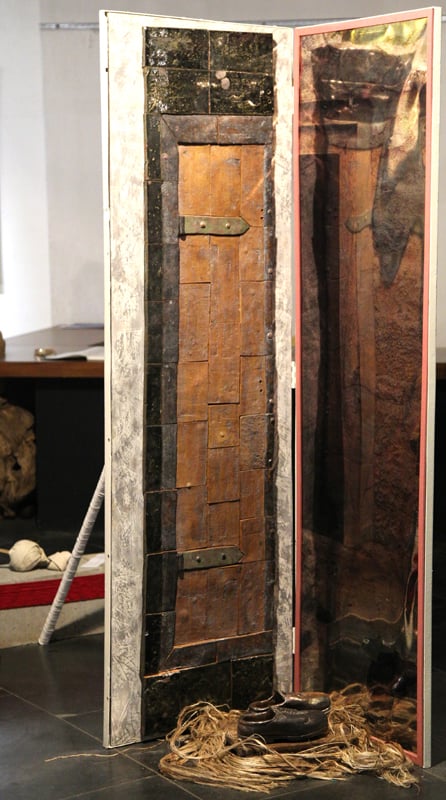

A dialogue emerged between the language of clay and images. The artworks started taking shape through the unpredictable nature of fire. The photographic imagination multiplied and deconstructed forms within the infinite possibilities of digital experimentation, finally representing a new thought and material that came out of this discovery.

The two artists bound by Her image, and Her peripheries mingled their energies, meandering through an emancipating flow.

Working on the project “Her” has been one hell of a roller coaster. From dissecting to expanding to narrowing down; the journey is endless. Through the ebbs and flow of creation, destruction and fragmentation there has been rebuilding of visuals, materials, composite, nets, structures, concepts, series and single works.

This collaboration by nature has been an artistic, personal, familial, social and spiritual exploration of two artists living in Pune, and engaging with an identity particular to these roots.

The ‘godhadi’ became the main muse; a trope and symbolic representation of a disappearing culture. It probed an investigation of the Indian female identity in the present context. … Who and What is an Indian woman in the post globalization world?

The upcycling of discarded images resonated as one of the many layers in this work. It led to the exploration of printing on fabric, and fragmenting the image while slowly processing traditional norms into a contemporary narrative.

Daughters are given a godhadi as a part of their trousseau. This central point of focus has emanated in many ways as Ruby’s established practice and studio has been a point of cross generational dialogue. Her life steeped in tradition has rooted many ethereal concepts in this ethnic quest.

Both artists practicing two different mediums, coming from two different generations and with distinct ideologies in art, transcended questions of authorship, thus never impeding the production of ideas. The whole artwork reflects a very clean gentle yet powerful feminine feel. The installations flow into each other without any distinct boundaries.

For Ruby the entire project is an experience of reappearing dialogues. She says, “Many facets of my life that felt like bygones are re-emerging in every aspect of this photograph.

It takes me back to the memories of stitching and sowing, as we cousins and sisters sat around the verandah on a sunny winter morning, chatting and trying to finish a school craft project.

Then I find myself disappearing within the old doors - an inquisitiveness to see the life within (as if I was back into my childhood home in Dholpur).Those rugged over-worn shoes and the scattered chappals remind me of the era of way side cobblers that is slowly disappearing.

The entire show stands unique as a pure experience of two creative persons.
There is neither a desire nor an attempt to breakdown traditional notions of sculpture, art or form. It is a portrayal of what two artists experience when they collaborate and work with unfamiliar mediums. Throughout the space there is a strong hint of provocation without actually demanding it.

There is a conveyance that to be a female artist one does not necessarily have to defy important roles that a women plays in her life. Ruby has never regretted being in her role of wife, mother, daughter in law and care giver. While Shraddha has tested current norms by experiencing both the aspects of modern approach and traditional expectations in order to find her own balance. As this dialog continues, it is a constant feeling of CURIOSITY. The longer you look, story upon story unfolds till the mind becomes still and only an EXPERIENCE remains.

Machine made cheap foot wear is replacing the old with urgency and it seems the shoes are begging me to take a look at them before they fall into extinction.

The niche (allaa) in the tumbling, crumbling mud wall beckons; was it here the oil lamp was kept? When I was a child, electricity hadn’t come into Kalpi my mother’s village home.